Anthony Metivier's Blog, page 22
March 9, 2020
10 Ways Your Memory Can Help Keep You Safe During a Pandemic

Source: Flickr
Coronavirus. COVID-19. SARS-CoV-2.
It seems like you can’t read the news without hearing something about the latest global outbreak.
And with misinformation spreading faster than the virus itself, how are you supposed to know what’s truth and what’s not?
More importantly, how can you maintain your health (and sanity) during a time when everyone seems to be on the verge of panic?
Let’s take a deep breath…
And then look at 10 ways you can stay mentally and physically healthy during this worldwide crisis — by using your memory (and some helpful tips from the folks on the front lines).
Ready to do this?
Let’s go.
Want to skip ahead?
1. Scrub-a-dub-dub
2. Pretend your hands are on fire
3. Don’t listen to Uncle Joe
4. Do listen to the experts
5. Stock up, modestly
6. Memorize phone and other important numbers
7. Meditate and get your Zzzs
8. Save face masks for health care providers
9. Memorize directions
10. Don’t panic
Live Your Magnetic Life
As we begin, remember what the wise writers of The Hitchhiker’s Guide to the Galaxy would advise us…
Don’t panic.
One of the best ways to survive any crisis is to stay calm, be rational, and remember that nothing in life is certain.
Well, other than our first tip for staying healthy…
1. Scrub-a-dub-dub
You may be getting a little tired of hearing it, but properly washing your hands is one of the best things you can do to stay healthy.
Whether you sing “Happy Birthday” (twice) or some other song, be sure to wet your hands thoroughly, lather everywhere, clean under your fingernails, rinse, and dry.
Even better, Dr. Edith Bracho-Sanchez, a pediatrician with Columbia University Medical Center, advises a new habit for everyone: wash your hands as soon as you walk through the door of your home.
And even if your hands are clean, remember: don’t touch your face.
2. Pretend your hands are on fire
But, but, but!
“How can I keep from touching my face? That’s so hard to do!”
For the technique I’ve been using, I imagine I have gloves of fire on my hands and don’t want to touch my face.

If you don’t like the image of fire, try ice or some other substance. The point is to use a simple visualization that you link with your body.
To remind yourself, you can draw a small dot or even the word “fire” or “ice” on the back of your hand.
Lucid dreamers often do this to help them remember to do “reality testing.”
These approaches are linked to another kind of technique for remembering where you put your keys, such as imagining them explode when you set them down. You are simply adding an imaginary layer of multi-sensory imagery to a regular operation.
Here’s another related tip:
If you want to combat that effect when you leave your living room to get a pair of scissors in the kitchen, only to forget what you are looking for, you can imagine scissors in your hand and make a fist around the imaginary pair.
3. Don’t listen to Uncle Joe
No offense to Joe, but unless he works for one of the global health organizations whose work revolves around mitigating the effects of COVID-19… he’s probably not the best source of information.
The same goes for most of the internet. Seriously.
Most of the mainstream media outlets are driven by views and clicks. And what gets them the most eyeballs?
DRAMA! TERRIBLE THINGS!! THE WORLD IS ENDING!!!
Instead of allowing the media to drive your personal narrative and understanding of what’s (really) happening, choose your news sources wisely.
If you’re wondering who to trust, here’s a chart that breaks down media bias.
4. Do listen to the experts
For health-related issues, it’s also good to look to the experts. In this case, the World Health Organization (WHO).
Additionally, for readers in the United States, the Centers for Disease Control and Prevention (CDC). For those of us in Australia, the national Department of Health. And for readers elsewhere in the world, your trusted regional or national healthcare organizations.
I’ve also been watching Dr. John Campbell’s detailed daily updates on YouTube, including this great one about washing your hands as soon as you get home:
Tim Ferriss recently shared the following recommendations on how to stay informed:
A Center for Health and Security newsletter
And a curated Twitter list
The trick is to make sure your reading comprehension skills are strong. A lot of the panic comes from people failing to understand what they’re reading and the nature of scientific processes.
You can also talk with your own medical professional:
When I was booking my flights to go to TEDx Docklands in Melbourne (February 2020), I visited my family doctor to air my concerns.
As I told our doctor, even though speaking at the event presented a huge opportunity for me as a memory expert, I didn’t want to infect others should I become sick.
She said two things:
We all have to simply go about our lives, and
If you’re going to get sick, get sick early. Later, it could be very difficult to get help.
The second point involves a bit of dark humor, but if you really think it through, it does make sense. Although my heart didn’t feel 100% right about it, I went, and to my knowledge, none of the attendees has fallen ill.
And thanks to the memory techniques, I could relax and deliver because I know how to memorize a speech.

I did keep close to our hotel, however. We can visit the art galleries and museums next time we’re in Melbourne.
5. Stock up, modestly
I bought extra water, food, and toilet paper weeks ago.
This was especially important because I have multiple food sensitivities. I won’t be able to just whip into any old can of chili if I can’t make it to the grocery store.
As you prepare, think about other things you would need if you had to self-quarantine or practice social distancing for a week or two.
For example, do you have a fire blanket for every person in your home?
At first, my wife thought I was insane for buying them, but it only takes a second to put one over your shoulders in the event of an emergency — something you won’t be able to do if you aren’t prepared.
Health experts also recommend that anyone who uses prescription medication on a regular basis have at least a 30-day supply on hand.
6. Memorize phone and other important numbers
Sure, you’ve got everyone’s number stored on your phone.

So… what are you going to do if you lose your phone when you’re too sick to keep track of things?
Or how about your insurance number?
There are endless situations where you might need your bank account number, phone numbers of your immediate family, and credit card instantly on the tip of your tongue.
Remember, building mental strength is helpful in emergencies as well as your day to day life.
7. Meditate and get your Zzzs
It’s not just helpful for your memory — getting enough sleep, eating well, and practicing mindfulness meditation can also improve your immunity.
One simple body scan visualization that won’t necessarily protect you from a virus – but can be very relaxing and orient your mind on health – goes like this:
As you lay on your back, imagine a healthy color like blue or green entering your lungs and flowing through your body. Try to follow it through your lungs and veins all the way down to your toes.
Then, as you breathe out, imagine all the impurities this healthy color has picked up exiting your breath in a color like white. Imagine it disappearing into the atmosphere.
Repeat 5-10 times, until your body begins to feel relaxed. You can even come up with your own variations.
8. Save face masks for health care providers
Neither the WHO or the CDC recommend face masks for community use in healthy individuals. If you are healthy, the only time they do recommend wearing protective gear is when taking care of a person with a suspected or confirmed 2019-nCoV infection.

If you’re just trying to stay healthy, the jury is out on whether wearing a mask helps or hurts your chances. In fact, NPR has done quite a bit of in-depth reporting about the matter.
If you’re very prone to touching your face – and the visualization above doesn’t help – wearing a mask might help you stop touching your face. But for many people, it just creates another surface for infectious particles to get trapped on.
And remember: if you do touch your face, be sure to wash up.
9. Memorize directions
It’s one thing to consume directions — like “don’t buy masks,” or “call your doctor before visiting their office if you’re experiencing symptoms.”
But to really internalize the directions, you can memorize them. As mentalist Derren Brown points out in his book Tricks of the Mind, by memorizing to-do lists, he was more likely to actually complete them and follow the plan.
Here’s how to do it:
Create a Memory Palace that has enough space for the directions you want to memorize.
If you’ve never created a Memory Palace before, here’s a free training to teach you how:
Let’s say you’re memorizing the direction to call the clinic before showing up.
On Magnetic Station one of the Memory Palace, imagine yourself picking up a big red phone and calling the clinic.
To memorize the direction not to panic, imagine a giant cartoon version of yourself suddenly relaxing after panicking. Or, think of a pop culture character you know who tends to freak out, like Homer Simpson, and imagine him rapidly transforming himself into one of his more vegetative states.
Think these kinds of visualizations are unlikely to work?
Think again: Dr. Tim Dalgliesh is just one psychologist who has shown that pairing positive emotional states with a Memory Palace helps you not only act more positively, but also remember to do so.
10. Don’t panic
I’ll say it again. And again.
During a global health outbreak moving as quickly and evolving as rapidly as this one, the best thing healthy people can do is to stay calm, informed, and prepared.
If you’re having trouble keeping calm, the WHO compiled some good recommendations for coping with the stress of this outbreak:
Live Your Magnetic Life
I’ll leave you with a few parting thoughts:
Be good to people now. Love your loved ones while you can. And don’t wait for things like coronavirus to be a wakeup call because as Michael Gusman reminds us, things can happen anytime.
Until the next time, take care and keep yourself Magnetic (and wash those hands)…
The post 10 Ways Your Memory Can Help Keep You Safe During a Pandemic appeared first on Magnetic Memory Method - How to Memorize With A Memory Palace.
February 25, 2020
Anastasia Woolmer on Memorizing Movement and Mastering Recall
 No one has demonstrated the multi-sensory nature of memory techniques with as much grace as Anastasia Woolmer.
No one has demonstrated the multi-sensory nature of memory techniques with as much grace as Anastasia Woolmer.
In fact, Anastasia has literally married memory training with physical activity.
This means that she’s released the Memory Palace journey and associated memory techniques from the mind.
One of those ways is through dance.
This is wonderful, because I’m asked frequently about how to memorize movement.
Although I’ve played around with it, finally our community has access to the processes by someone who has spent a great deal of time with this memory-movement skill.
It turns out there’s a lot to it – and some standards that already exist in dance.
To supplement the audio, you can check out a demonstration for yourself by watching Anastasia’s TEDx presentation. Then, dig into this episode of the Magnetic Memory Method and learn the “mnemonic logic” behind the movement.
As you can already tell, Anastasia reminds us that mental imagery is not just visual.
Indeed, the best memory strategies always encompass all our senses. The most solid and beneficial techniques incorporate all these senses into a unique and powerful tool that is universally accessible.
The Path Of A WorldClass Memory Expert and Memory Athlete
On top of being a self-taught, two-time Australian Memory Champion, Anastasia is a public speaker, memory coach, former professional dancer and contestant on Australian Survivor: Champions v Contenders.
As the Australian Memory Champion, she was the first female to hold the title in the country. Anastasia set the record for the most binary digits remembered in five minutes at 360, the most numbers remembered in 15 minutes, 304, and the most consecutive spoken digits without an error, at a remarkable 86.
Anastasia and I discuss her path, and transformation, from a widely-held (and untrue) belief that her memory was fixed and could not be improved, into a history-making Australian memory champion. As we proceed, you’ll learn more about how she married ancient memory techniques to modern dance to create a method that truly worked for her.
And this podcast and her wisdom is not just for aspiring dancers or choreographers.
As Anastasia demonstrates during our chat, you don’t have to settle for rigid and inflexible learning techniques. You don’t have to be frustrated with attaining your learning goals. You are not tied down to any “right way” to do things.
In the world of dance, I believe this is called free-styling. You’re not bound by the choreography of what moves you should make. Listen to your body, all your senses, and make the journey, and the dance, your own!
Press play now and discover:
The two components necessary to be a “fit” human
How economics relates to memory improvement
The best way to deal with the “initial panic” of an influx of new information to be committed to memory
The benefit of memory exercise in a variety of environments, and why noisy surroundings can actually be great for memory training
The “trick” to multitasked focus, and a simple activity that anyone can do to strengthen that skill
The best method for recovering from memory mishaps, even in a public speaking setting
How to use the Method of Loci to memorize and deliver a speech
The similarities between writing a story and creating a Memory Palace journey
When you shouldn’t memorize anything verbatim (even if it seems like a good idea and you want to strive for perfection – hint: you shouldn’t!)
How learning more, more information, more skills, and taking on more hobbies, is an endless cycle, and why you want to be on it!
The secret dancers naturally utilize that you will want to always employ in learning new information
Why the best methods to memory improvement are multifaceted, multi-sensory, and completely inclusive and customizable, and why individuality is the most important facet of incorporating memory training into your life
Further Resources on the Web, this podcast, and the MMM Blog:
Anastasia Woolmer’s official website
Anastasia’s Master Recall courses
5 Sensory Memory Exercises for Better Memory Palace Success (MMM Blog)
Aphantasia: Develop Your Memory Even if you Cannot See Mental Images (MMM Blog)
Tansel Ali On How Gratitude Can Help You Remember Almost Anything
The post Anastasia Woolmer on Memorizing Movement and Mastering Recall appeared first on Magnetic Memory Method - How to Memorize With A Memory Palace.
February 18, 2020
Explicit Memory: Everything You Need To ERASE The Confusion
 Do you remember your first trip?
Do you remember your first trip?
Maybe it was to Paris, or just a school outing.
My first travel memory is with my family. We crossed much of Canada, camping and fishing our way from British Columbia to New Brunswick.
And my first school trips were to a farm and a chocolate factory. You better believe I will never forget the chocolate trip!
No matter where you went for your first outing, I bet you can describe it in all its technicolor details.
Or how about this:
Do you know the capital of Iceland? Or what about some other fact you memorized for a pop quiz or trivia night a few months ago?
In all these instances, it is your explicit memory that helps you intentionally recollect facts and personal experiences.
Amazing, isn’t it?
In this post, I’ll explain all about explicit memory, how you form them and how you can build better and stronger memories.
This is what we’ll cover:
What is Explicit Memory?
Are There Different Types of Explicit Memory?
Implicit and Explicit Memory — How Do They Differ?
How Do You Form an Explicit Memory?
How Does Your Brain Retrieve an Explicit Memory?
3 Fun Ways to Boost Your Explicit Memory
What is Explicit Memory?
Explicit memory or declarative memory is part of your long-term memory. You use it throughout the day. When you recall the time of your dentist appointment or recollect your 16th birthday party, you are using your explicit memory.

Explicit memory needs conscious awareness. The cognitive processes of forming explicit memory are also often associative — you link different specific memories to form one consolidated human memory.
There are two types of long-term memory: implicit and explicit memory.
While implicit memory or procedural memory are skills that you pick up unconsciously and unintentionally, explicit memory is everything you actively work on remembering.
Some examples of explicit memory include trying to remember the name of people you meet or trying to cram into your human memory that the capital of Iceland is Reykjavík.
Although implicit and explicit are subtypes of long-term memory, when you think of memory function in “general,” you are referring to the explicit segment.
What’s more? Implicit and explicit types of memory get affected differently with Alzheimer’s disease. While explicit memory is damaged in Alzheimer’s disease, implicit memory remains intact.
Both implicit and explicit memory systems work together in healthy individuals.
Fun fact: there are two other memory processes – short-term memory (also called working memory) and sensory memory (it retains sensory information like those from sounds in the form of echoic memory). A memory must move through these before a lasting long-term memory can be formed.
Are There Different Types of Explicit Memory?
We can categorize explicit memory into episodic memory and semantic memory.
In 1972, Canadian experimental psychologist and cognitive neuroscientist Endel Tulving found a few differences between episodic and semantic memories and proposed the distinction between these two types of explicit memory.
Curious?
Let’s take a quick look:
What is Episodic Memory?
Episodic memory, like the name implies, is a memory of a previous experience, past event, or activity.

Memories of specific events like your first kiss, that fantastic trip to Greenland, or your first prom are all episodic memories. Some episodic memories are also autobiographical, like remembering your date of birth or the street name where you grew up.
You can consciously recollect these past personal experiences.
You’re usually able to associate how you felt during these specific memories. That’s because your emotions are essential when it comes to memory consolidation.
Your brain’s hippocampus is in charge of processing and storing your episodic memories while your cerebellum is involved in retrieval.
If you can recall the excitement of your first day at university or the stress of moving to another home, you can very clearly remember everything that happened on that day based on how that episode made you feel.
That’s the main difference between this type of memory and semantic memory.
What is Semantic Memory?
Semantic memory is usually based on knowledge that you picked up throughout your life and your capacity to recollect this knowledge at will. These aren’t based on personal episodes in your life.
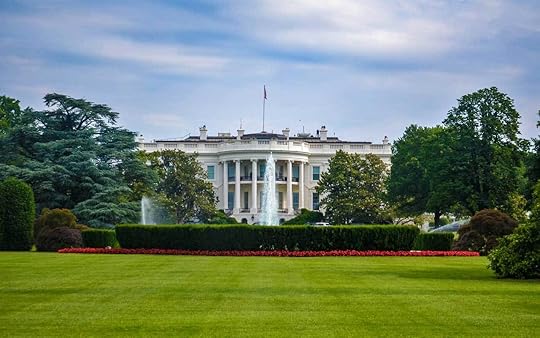
Semantic memory usually refers to general knowledge. Things like how WWI started in 1914 or how the White House looks are examples of semantic memory.
However, it’s not just limited to general knowledge. For example, you know that the sky is blue, what an elephant is, and how to ride a bike.
You probably started learning all of these when you were a kid, as you were starting to experiment and interact with the world around you. You don’t remember how you learned them and yet they’re still consolidated in your mind.
These specific forms of memories aren’t tied to a feeling or to any personal experience.
Implicit and Explicit Memory — How Do They Differ?
As you’ve probably noticed, explicit memory involves conscious recollection.
Whether you remember it based on how you felt that time or based on how hard you studied for that exam, you consciously worked to remember it.
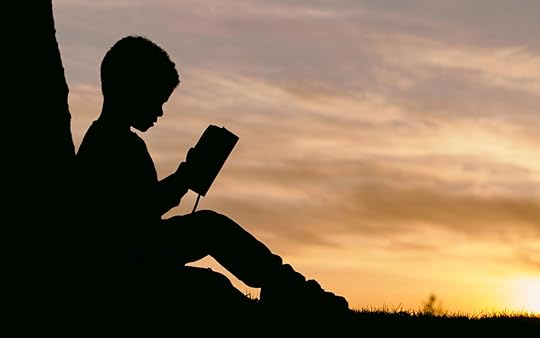
This is not the case with implicit memory.
Implicit memories (often called non-declarative) are those you never consciously tried to remember.
They are a form of memory that you use to interact with the world around you every day. These include your vocabulary, your spatial memory, and your motor skills.
You learned them and then don’t have to relearn again and again to perform them. You usually can’t even remember learning that skill and yet you can do it almost automatically.
An example of implicit memory can be a simple task like how to use a fork, how to boil an egg or even the chorus of ‘Single Ladies’. All of these are unconscious memories that you may not even know you had!
Just reading ‘Single Ladies’ may probably be enough to get that song stuck in your head for the rest of the day. Sorry about that!
How Do You Form an Explicit Memory?
The processes used to form explicit memories are encoding and retrieval.
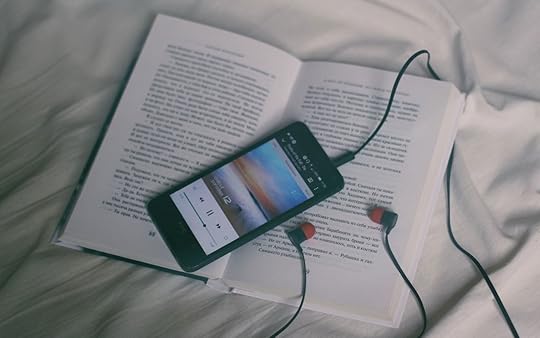
First, you record or encode information by absorbing it when you read, hear something, or interact with someone. During recording, memories are stored in the hippocampus, which is located in the brain’s temporal lobe.
The hippocampus is the one involved in creating neural connections in different regions. When you’re rehearsing a memory, the memory passes through your hippocampus multiple times.
You have both short-term memory and long-term memory. Anything you remember is first kept in your short-term memory. From there, your hippocampus has the task of deciding if that temporal memory is going to become a long-term memory or simply be forgotten.
If a memory is important, it’s moved to your long-term memory throughout your cerebral cortex. Its exact location will depend on the type of memory.
Physical damage to the cortex (as seen in a magnetic resonance) has been shown to affect your cognitive processes related to memory directly.
Your brain labels most of the memories you make as unimportant and it discards them, so they never make it to long-term memory.
Since explicit memories are part of your long-term memory, these would be facts, figures, experiences, and episodes that your brain consciously moved from short-term to long-term parts of your memory.
For example:
Do you remember the trousers you wore to work two weeks ago?
No, right? That’s because your hippocampus didn’t consider that information relevant enough to retain for longer than a few seconds.
That’s when repetition comes in. The more you retrieve a memory, the easier it’ll be to retrieve it again because you’re telling your hippocampus that it’s important.
Now:
If a young lady happened to notice your trousers and complimented you about them, you would want to tell all your friends about it (as many times as possible, presumably).
At every instance possible, you would repeat the story of how you were just sauntering down the road when this amazingly beautiful girl smiled at you and complimented your trousers.
The more you repeat that story, the more you reinforce that memory and the recording becomes permanent.
You will never forget those trousers. Maybe they even become your lucky trousers!
Once a memory becomes a story, you don’t just remember facts; you remember how those facts made you feel. Your amygdala connects your memories to specific emotions. And you can recall such memories at will.
Is Sleep Important to Form Better Explicit Memories?
There’s a reason why when you’re jet-lagged, or you simply haven’t slept well, you keep forgetting things.

That’s because sleep plays a crucial role in memory formation.
When you sleep, you perform the most crucial part of making new memories: consolidation.
When you’re awake, you acquire the memory or learn a new fact or skill. But it’s only during night time when you sleep that your brain files the memory in a place you can retrieve it later.
And sleeping doesn’t just help you consolidate the memories you’ve gained that day.
When your brain is organizing new memories, it can associate them with older memories as well. This not only helps you remember things better, but also helps you in your creative process by finding links to your memories you didn’t have before.
When you don’t sleep well, your brain simply lacks the time for filing, organizing, and processing new memories, leading to bad recall later. Believe me – I’ve been there!
If you want to remember what you learned here, you better get your 8 hours of beauty sleep tonight.
How Does Your Brain Retrieve an Explicit Memory?
Memories are usually retrieved by association.
When a teacher asks you a question about Independence Day, you’ll probably try to remember the lecture he gave a week before.
Memory isn’t perfect, though.
If you think back to that lecture, you’ll probably remember what the teacher said but not the shoes he was wearing.
That’s because once the explicit memory is consolidated, it is stored by a group of neurons that react in the same pattern created by the original experience. You won’t remember the shoes because they didn’t create an impact on your original experience, so the memory was lost after being a short-term memory.
These patterns are recorded several times over to create redundancy. That way, if there’s damage to the original, you’ll still be able to retrieve the memory.
Can Memories Get Corrupted?
However, this also means memories can become corrupted with time.

Since you can’t notice everything at once – and your mind doesn’t like to have holes – it fills up the gaps between your memories from other similar memories.
If you try to retrieve details from a memory that wasn’t there, your mind may fill that detail with information from a different memory. Then every time you retrieve that memory, you’ll reinforce that false detail into the experience.
That’s why you may be sure you remembered the right thing for a test only to find out you were wrong when getting the result.
Explicit memories don’t have to be retrieved on purpose. Sometimes simple stimuli can act as a trigger. Have you ever smelled some spice or perfume and felt as if you were teleported to another place?
Explicit memories are remembered by an association that your brain makes, in a conscious or unconscious manner.
However you make them, it’s essential to keep up on the state of your memories. One study compared over one thousand Alzheimer’s patients and found that patients who are aware of memory loss are less likely to develop Alzheimer’s disease.
Why Do You Lose Memory?
Do you keep forgetting things? Don’t get an MRI just yet!

Forgetting things you used to remember is a normal part of the learning and memory process, especially as you age, and it rarely signals memory impairment.
Memories are a use-it-or-lose-it kind of thing. If you don’t remember a particular memory for long enough, your brain’s response is typically to forget it to make space for new ones.
And that’s great! In a healthy brain, time heals all wounds.
However, some people don’t get that luxury.
The findings of different studies that compared the memory process of patients with post-traumatic stress disorder show that PTSD directly impaired the creation of explicit memories in their subjects by affecting brain activity in the hippocampus and prefrontal cortex.
This also affected facial emotion recognition since you rely on these areas to remember and recognize those signals.
However, the tormenting effect that other memories typical of PTSD causes are hard to forget.
For experimental psychology, getting better at forgetting is just as big of a challenge as getting better at remembering.
3 Fun Ways to Boost Your Explicit Memory
Since explicit memories are memories you put effort into recording, you can create those at will.
The problem arises when you’re trying to record information that doesn’t seem particularly relevant to your brain.
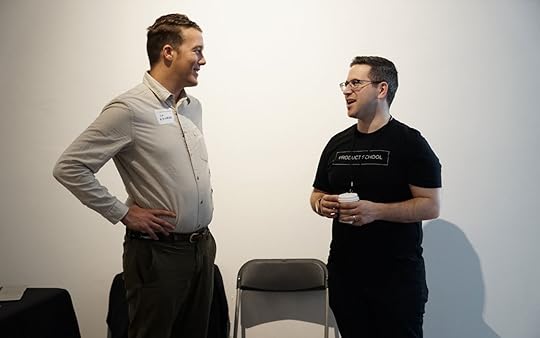
Imagine you’re at a party and get introduced to five people. By the time you get to the third person, you probably already forgot the name of the first one.
Why? Because your brain wasn’t thinking about it. You were probably more worried about creating a good impression, giving a good handshake, or trying to look friendly.
All that was very important to your brain, so listening to their names was pushed to the side.
How can we solve it?
Here are three fun ways to strengthen your memory performance:
1. Repeat, Repeat, Repeat
Repeating information is an excellent way for temporal memories to become permanent ones. If you make an effort to repeat someone’s name when you get introduced to them, you’re more likely to remember that name for a long time.
Although repetition is usually associated with implicit memories (like riding a bike), it can also help you form explicit memories.
Repeating answers for a test, passwords, and even phone numbers is a simple but proven way to consolidate a memory.
It’s even better when you use elaborative encoding (exercises) because that reduces the amount of repetition while increasing the impact of each.
2. Use Bizarre Association
A great way to remember information is to associate it with things you already know. Try to think about how things make you feel or tie the memory to another strong memory you have. The stronger the connection, the easier it’ll be to remember.
Even the most forgetful person will probably remember another person who shares their moniker.
You can use this technique when you go grocery shopping. What most people do is try to memorize a list of words of what they’re going to buy. Then you associate your grocery list with a number.

A more effective way is to associate it with a more memorable thing, like a recipe.
Why?
Because your brain finds the task of processing and recording visual memories far easier than a list. This is exactly what a study that compared participants involved in a supermarket scenario found: people are more likely to remember the image of their groceries than the simple words.
And, if you’re using a recipe, it doesn’t even have to be a real one!
For example, say you need to buy eggs, milk, tomatoes, toilet paper, and batteries. You can associate all of them by imagining making scrambled eggs with a bit of milk and tomatoes, mixed with batteries and garnished with little bits of toilet paper.
Make it as realistic in your head as you possibly can. Imagine the colors, the smell, the texture, and even the taste.
The more ridiculous your association is, the more memorable it’ll be!
And when you use the Magnetic Memory Method to become a mnemonics dictionary, all the better.
3. Build Memory Palaces
The last two techniques work better combined.
The Memory Palace technique is an ancient way of remembering things. Traced back to the Greeks, it has been used by geniuses like Hannibal Lecter and Sherlock Holmes to remember everything.
Memory Palaces, however, aren’t fiction.
A Memory Palace consists of associating memories to a location you’re familiar with. You visualize that place in your head and you associate memories to parts of that place.
If, for instance, you were to associate the room you’re in with memories, you’d store the information in the corner, the drawers, the ceiling, etc.
That way, whenever you need to remember something, all you need is to go to your mind palace and look it up.
Neat, right?
Make Better Memories
When you build Memory Palaces using the Magnetic Memory Method, you unlock the powers of:
Autobiographical memory
Episodic memory
Semantic memory
Procedural memory
Sensory memory
Iconic memory
…and so much more.
These improvements allows you to move information into explicit memory faster — and with predictable and reliable permanence.
Otherwise, you’re just waiting around for flashbulb memory, and that’s not a strategy.
You know you deserve better.
The long term effects of using the Magnetic Memory Method to remember and recall information is stronger and results in a healthier brain.
So are you ready to give a booster shot to your explicit memory?
Pick up your copy of my free Memory Improvement Kit, and make your memory Magnetic!
The post Explicit Memory: Everything You Need To ERASE The Confusion appeared first on Magnetic Memory Method - How to Memorize With A Memory Palace.
February 11, 2020
Reading Comprehension Strategies: 13 Ways To Eliminate “Rewinding”
 We’ve all been there. Drudging through a book that’s hard to grasp.
We’ve all been there. Drudging through a book that’s hard to grasp.
What started out with such enthusiasm soon becomes a joyless task.
‘’What does that mean?’’ you cry out.
And just as soon as you start getting into a reading flow… you’re rewinding again. It’s a killjoy. It sucks the pleasure out of reading.
It’s enough to make you quit.
And the scary thing is you miss out on so much when your reading becomes stagnated.
But reading comprehension strategies are not just for teachers or struggling students. Mature learners need to keep pace with the younger generations and test their comprehension, too.
With better comprehension, you can remember and use more of what you read.
Here’s what we’ll cover today:
1. Something’s Missing From Your Learning Toolbox
2. Be Purposeful For Pleasure’s Sake
3. Physical Books — One Antidote to Digital Amnesia
4. Evaluate and Expand Competence
5. Monitor Understanding To Leap Ahead and Recalibrate
6. Recognizing Story Structure and Maps
7. Generate Questions to Branch Out
8. Make Inferences (and Predictions) Along The Way
9. Seeing With Graphic Organizers
10. Summarizing And Panning for Gold
11. Memory Palace a Stairway To Heaven
12. The Major Method — Where Numbers and Letters Collide
13. Input-Output Lifestyle Choices
The Four Levels of Reading
Your Next Chapter!
Let’s jump in, or if you prefer watching:
1. Something’s Missing From Your Learning Toolbox
How do you improve reading comprehension?
Maybe you’re a teacher and want to help your students with reading comprehension. Or you’re simply trying to uncover reading comprehension strategies for adults. Whatever the case, you realize it’s not just the topic you need to master first, but the correct tools for learning.
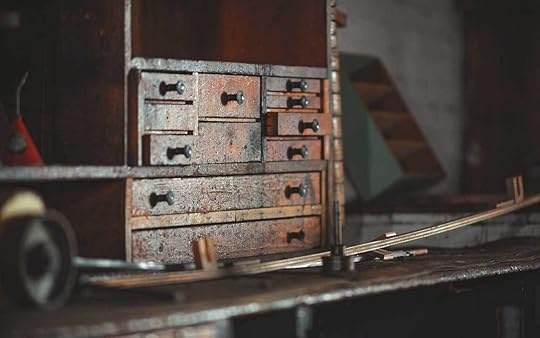
In her well-known essay, Dorothy Sayers discusses the lost tools of learning:
‘’Although we often succeed in teaching our pupils ‘subjects,’ we fail lamentably on the whole in teaching them how to think: they learn everything, except the art of learning.”
Since reading uses the information you already know, better memorization leads to clearer reading comprehension. The result? You can understand and remember more of what you read. The cumulative effect is powerful.
2. Be Purposeful For Pleasure’s Sake
Being purposeful about your reading goals aids comprehension. Drill down into your intentions and ask, ‘’what’s in it for me?’’
Why are you reading anyway? If reading isn’t meaningful it can become an empty pursuit. It’s another reason people quit in the second round.
On the other hand, when your reading is aligned with a clear aim, enjoyment follows. Not only that, it aids your memory as time marches on because:
Pleasure is instantly easier to remember!
If you’re still uncertain, start simply. Start practicing regular reading with less challenging novels — this blends enjoyment and momentum. Then when you decide to tackle tougher books your comprehension skills are already well-honed.
3. Physical Books — One Antidote to Digital Amnesia
While digital books have many excellent benefits (cost, search ease, mobility, sustainability, sharing) it’s worth remembering the trusty paper book.
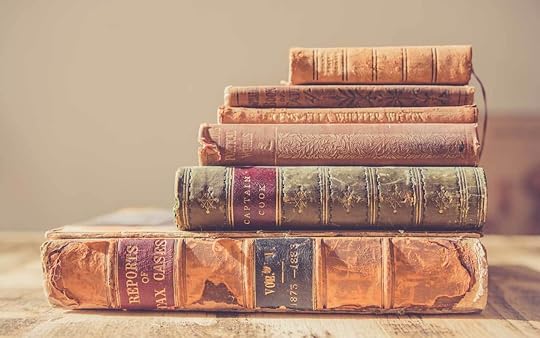
But why would you choose physical books over digital or eBooks?
First, your precious memory plays a vital role in reading comprehension. Digital amnesia affects our cognitive ability to remember – and learn more – faster. Since your aim is to become a better reader through magnetic memory, paper books help to:
Index the material better in your mind
Reference and re-reference while reading
Keep the books visible
Use reading to practice Digital Fasting
Remember page numbers and details
Assimilate reading into your life, and…
Demonstrate the values and virtues of reading from real books and remembering as much as possible from them
In a world of devices, wi-fi, hotspots, and tabs… your physical book can become a spiritual retreat.
4. Evaluate and Expand Competence
Let’s face it: some textbooks are long and (frankly) scary. Every reader can struggle with how these books are presented — with lengthy paragraphs and sentences, and challenging vocabulary.
A good place to start is to evaluate your strengths and weaknesses. The trick is to gauge your level of competence and gradually expand it (E.E.C. = Expand Existing Competence).
What does your typical reading session look like?
Do you start daydreaming after 30mins as your energy drains?
If so, try to push 10 minutes beyond. You might use a Pomodoro timer to take a break after 30 minutes.
It helps to understand your levels of processing effect in the Big Five of Learning:

In other words, your ability to read, write, speak, and listen comes from memory. When you read, write, speak, and listen you put comprehension into memory in the first place.
Memory to Read –> Reading to Memory
It’s a perfect circle that highlights the importance of developing a better memory.
5. Monitor Understanding To Leap Ahead and Recalibrate
Monitoring is about realizing what you know, what’s unclear, and any gaps in your understanding. The method helps you find the blockers to comprehension. By defining issues with comprehension you can tackle them head-on.
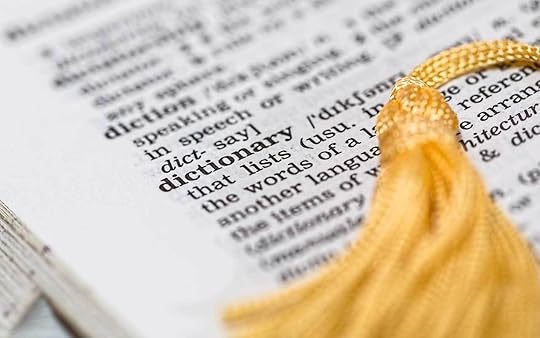
Einstein said:
“If I had an hour to solve a problem I’d spend 55 minutes thinking about the problem and five minutes thinking about solutions.”
When you write, listen, and speak about a text you reflect on its meaning.
It’s a chance to move from vagueness to better clarity. The offshoot is, you can zone in on and identify blockers and get misconceptions out of the way.
Aslo, ask for help.
By sharing your thoughts with a study partner you can get valuable feedback too. This feedback loop can enhance your understanding and uncover any confusing passages. Monitoring comprehension can help you to read more books and supercharge your subject knowledge. This is all part of developing mental strength.
6. Recognizing Story Structure and Maps
Mature learners can benefit from recognizing a story’s structure.
It highlights the branches an author uses to structure the text. The contents, headings, and bibliography sections are obvious places to start. By further delving into the order of the subheadings, the setting, events, and characters begin to unfold.
It’s no surprise that you can also start to guess the theme and predict what might happen. Using your imagination in this way is bound to improve your reading comprehension.
7. Generate Questions to Branch Out
It’s only right that grown-ups should take a more proactive stance to learning. And there really are no silly questions when it comes to your reading goals. Let’s face it, who’s listening? Because this is more like self-reflection behind closed doors.

The mental process of elaboration involves repeatedly asking the classical questions: “who, what, where, when, why, and how?” By questioning and eliciting answers, guesses or theories, you can boost your understanding of a text.
Rather than just reading and being a reactive passenger, you’re driving to understand the context. You engage more with what’s going on through questions. And instead of a mundane reading challenge, you turn the pages with a new curiosity.
Depending on your reading genre you can create unique questions to aid memory and faster learning.
8. Make Inferences (and Predictions) Along The Way
Research by Robert Marzano (2010) states that inference is a foundational 21st-century skill for higher-order thinking.
So how do you make inferences in a book you’re reading? Four words — ‘’read between the lines’. Inference involves drawing conclusions from what’s implied rather than stated directly. Put simply, you use what’s known to make a creative guess about what you don’t know.
It’s about searching for clues in the text to figure out what’s being said from the context.
Then through your exemplary best judgment, you can land on what’s being suggested. Whether your inferences turn out to be wrong or right, you start to glean value and construct meaning.
That just means you have to adjust your thinking as you read.
For example:
What’s not being said?
Based on these clues I think….?
Because of the way these characters act it means….
I think….will find an escape route because….
I predict….will get married
I wonder if….Mr….is the actual villain
I suppose….might become the leader
I predict…. will fail
It’s useful to look over Nonaka and Takeuchi (1997) to get an idea of the differences between tacit and explicit knowledge.
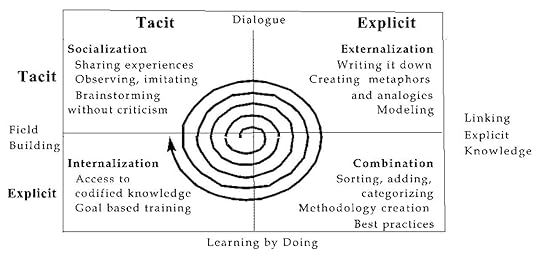
Spiral of knowledge (Source: Adapted from Nonaka and Takeuchi, 1997)
9. Seeing With Graphic Organizers
“A picture is worth a thousand words.” It’s true — many words can be conveyed in a single image.
A graphic image has the power to distill big ideas into a bite-size visual. Like rote learning, graphic organizers can boost your reading understanding. Graphic images are often more suitable for expository or information type books.
It’s no surprise that presenting concepts and connections graphically helps you remember them.
It helps draw your attention visually to various features in your book. With a little imagination, mind maps and tables, it works well because it helps you to understand, memorize, and learn faster.
Here are a few examples of graphic organizers:
Tree diagrams – categories and hierarchies
Tables – compare and contrast data
Time and cycle diagrams – order of events (biology, life, water cycle)
Flowcharts – steps of a process
The hierarchy of knowledge is another reading comprehension idea to consider. It’s about the relationship between data, information, knowledge, and wisdom. This becomes more important when you need to make a graphic organizer.

Source: https://kvaes.wordpress.com/2013/05/3...
10. Summarizing And Panning for Gold
Prior to summarizing it’s helpful to do intelligent highlighting while reading.
Decide beforehand how many key points you plan to memorize in the chapter. There’s rarely any need to do a total recall and try to memorize everything. That’s why proper goal setting helps you make a scope limit — it forces you to zoom in on the main ideas. Scott Young’s Ultralearning is great for more tips on this aspect of improving your reading missions.
Rereading can help to uncover any summary information that you mysteriously can’t remember. Like retelling, the process of summarizing condenses the main points into your own words. It’s like panning for gold. Once you’ve found some nuggets, you disregard the sand. Afterward, you can feel satisfied with a summarization mini-chapter.
Periodically, stop reading to contemplate on the main ideas in the text. This forces you to combine the key points into a clear outline. You could use new vocabulary as mental triggers when summarizing.
A good summary should paint an honest account of the big picture. The offshoot is that long passages appear less daunting.
‘’The more you share knowledge the more you memorize it. Share it, save it.’’
The process of sharing isn’t confined to your latest book. Try to practice making summaries of podcasts you listen to, informative videos you watch, or interesting conversations you have.
11. Memory Palace a Stairway To Heaven
The memory palace technique is a classical tool used in the ancient world. (Check out The Memory Code for the fullest possible depth of history.) It can boost understanding of books, since remembering information is a big part of why we read.

It’s a top recommended technique of memory champions and experts in the field. A Japanese man, Akira Haraguchi, recently demonstrated its power by memorizing π to 111,700 digits!
So how does the Memory Palace technique work?
Begin with association. You associate each piece of information you want to memorize with parts of a location you’re very familiar with; usually, your house is a good start.
Since you know this location very well, you place items you wish to memorize along a linear route through your house.
These are mental constructs you build in your imagination.
When you want to recall the information, you go through your mental route, and the information will be easily accessible.
When you add surprise characters and features to your memory palace, it helps make your Memory Palace even more effective.
You can also learn more about leveraging your imagination with Memory Palaces.
12. The Major Method — Where Numbers and Letters Collide
The Major Method is named after Major Beniowski. The earlier Major System (another term for it) was developed by Aimé Paris. He was world-renowned for his work in memorizing numbers. And thank goodness. His contributions have helped many thousands of people connect what we already know with what we don’t know.
Even with aphantasia, working with these techniques leads us to one incredible equation:
Exercising Your Memory = Improving Your Concentration = Better Reading Comprehension

The Major Method works by creating associations between numbers with sounds. Usually, a number is linked with a corresponding consonant like in this pattern below:
0 = soft c, s or z
1 = d, t
2 = n
3 = m
4 = r
5 = l
6 = ch, j or sh
7 = g, k
8 = f or v
9 = b or p

For example: to memorize the number 22 could be ‘nun’. Adult learners can use this sound-word association to memorize many numbers. All of this will come in super-handy when you know how to memorize a textbook.
Combined with a Memory Palace, you can use the Major to link numbers with other concepts you want to remember, like this:

A Memory Palace example showing the Major System combined with other mnemonic examples for remembering information.
13. Input-Output Lifestyle Choices
Lifestyle choices like taking care of diet, sleep, exercise, and meditation are often overlooked factors in reading (and learning in general).

Exercise: With people leading more sedentary lifestyles, health has never been as important. Regular physical exercise plays a big part in academic performance. A fertile mind enhances your creative energy.
Digital fasting: Mature learners are probably more adept at blocking out digital distractions. The aptly named smartphone is dumbing down our memory. Simply stepping away from devices can boost your focus and concentration powers. As a part-antidote to digital amnesia, reading leads to better brain health.
Diet: Our mind and body is a highly sophisticated organism. Yet some people live off processed artificial food and drink, and wonder why they’re ill so often. Eating more natural whole foods and avoiding refined sugars can help you become a higher performer.
Sleep: There is a good reason why airline pilots must get eight hours of uninterrupted sleep before flying. It leads to peak concentration and better overall performance.
Meditation: Meditation helps keep you on track with your vision. You can gain inner relaxation to keep you centered on what’s important. Whether it’s reading comprehension or memorizing numbers, meditation helps you to stay focused while everyone else falls by the wayside.
Bonus: The Four Levels of Reading
The team at Educational Technology and Mobile Learning put together an amazing infographic explaining the four levels of reading every student should know.

Source: https://www.educatorstechnology.com/2...
Your Next Chapter
Remember that frustrating feeling when you couldn’t grasp that new book? Having to ‘rewind’ through pages and paragraphs to eke out some understanding?
Instead of a dampened mood because you know you’re missing out on the valuable insight you need, reading comprehension strategies can help you race through the books you’ve always wanted to read.
It’s a fundamental skill that will serve as a tool to unlock any subject matter. You can truly leverage reading comprehension to achieve any goal like starting a business, passing exams, growing smarter, and contributing to brain health and concentration.
But you won’t make progress or increase your crystal and fluid intelligence without taking action. Pick one of the reading comprehension strategies in this post today, and start the new year with 20/20 vision to supercharge your reading comprehension skills.
The post Reading Comprehension Strategies: 13 Ways To Eliminate “Rewinding” appeared first on Magnetic Memory Method - How to Memorize With A Memory Palace.
January 15, 2020
Crystal And Fluid Intelligence: 5 Ways to Keep Them Sharp
 Jane: “Did you hear Jonas’ speech? He spoke so well! Expressive and kept the audience enthralled. Very intelligent!”
Jane: “Did you hear Jonas’ speech? He spoke so well! Expressive and kept the audience enthralled. Very intelligent!”
Amanda: “Yeah, he was great! Creative, definitely! But intelligent?”
Jane: “It’s the same. You don’t need to be a mathematician or scientist to be intelligent.”
And so the argument continues.
But what is intelligence, really? Do you have fluid intelligence or crystal intelligence?
In this post, I’ll delve into the two types of intelligence (Fluid Intelligence and Crystallized Intelligence), examine how they work together, and talk about which one is more important. You’ll also learn 5 magnetic ways to build razor-sharp intelligence.
Here’s what we’ll cover:
What is Intelligence?
What is Fluid Intelligence?
What is Crystallized Intelligence?
Can Fluid and Crystallized Intelligence Work Together?
Is Fluid Intelligence More Important Than Crystallized?
5 Magnetic Ways to Keep Your Fluid and Crystallized Intelligence Sharp?
What is Intelligence?
Many of the world’s most ‘intelligent’ scientists, researchers, and psychologists have been debating ad infinitum over a standard definition of intelligence.

For our understanding, intelligence is your ability to learn new information and use that knowledge to identify and solve problems.
You are deemed intelligent (read: smart) if you can use logic, reasoning, quick thinking, and planning to conduct daily activities effectively.
The good news?
You are not born with finite intelligence. You can boost your intelligence and thereby your social capital by using a proper memory method. (More about this later).
Are There Different Types of Intelligence?
Yes. Intelligence is subdivided into two distinct types — fluid intelligence and crystallized intelligence. They also go by the nicknames of gf and gc, where “g” stands for general intelligence.
The theory of fluid and crystal intelligence was first proposed by psychologist Raymond Cattell in 1963. He referred to the ability to reason as fluid intelligence, and the capacity to acquire knowledge as crystallized intelligence.
The concept was further developed by his student, John L. Horn, in the 1970s and 1980s. Their findings came to be known as the Cattell-Horn Theory of Intelligence.
The natural intelligence displayed by humans is very different from artificial intelligence (AI), which is intelligence demonstrated by machines. Our intelligence also differs in its cognitive capabilities from that demonstrated by open-source intelligence, which uses information collected from publicly available data sources. That’s not to mention our intelligence for developing concentration and memory through meditation.
A Fun Definition of Fluid Intelligence
Once, at a Paris hotel, my shower wasn’t working. I had checked in late at night, so there was no possibility of calling the plumber.
But I did manage to take a quick bath.
I used the Indian bucket bath method: where instead of a bucket and jug, I filled the drinking glass with water from the tap to pour over my body.

Genius, or what?
It was my fluid intelligence hard at work to come up with a novel solution to a unique problem.
Fluid intelligence is your ability to analyze, reason, and think out-of-the-box to find original solutions to new problems.
Your fluid intelligence uses logic in new situations or tasks, recognizes patterns, and incorporates abstract reasoning towards problem-solving.
Often, fluid intelligence is used when you solve math problems or jigsaw puzzles. You also use fluid intelligence when you start plucking on a guitar without prior training.
Your fluid intelligence does not depend on previously acquired knowledge. A person who is ‘street smart’ uses his fluid intelligence very effectively.
Fluid intelligence depends on your working memory, which is stored in the prefrontal cortex of your brain. It is governed by the anterior cingulate cortex and dorsolateral prefrontal cortex — regions of the brain responsible for attention and short-term memory.
More Examples of Fluid Intelligence
You use your fluid intelligence when you:
Identify patterns in logical reasoning questions,
Assemble a complex jigsaw puzzle using a picture,
Develop strategies or a game plan to solve problems,
Think outside the box when solving problems, or
Eliminate unwanted information when you conduct research.
There is bad news, though.
Fluid intelligence starts to decline with age, sometimes even as early as your 20s or young adulthood. Therefore, cognitive functions in elderly people may be reduced.
However, there are ways to keep it sharper and stronger even as you age. (We’ll come to that soon!)
Next, let’s look at crystal intelligence.
A Quick Definition of Crystal Intelligence
Crystal intelligence or crystallized intelligence is your ability to use knowledge and information previously learned over the years.
This type of intelligence is what you acquire through education and experience. Crystal intelligence gets cemented in the hippocampus, neocortex, and amygdala — parts of the brain that store and use long-term memories.
You use crystal intelligence when you do long division, or learn a new language. These tasks also require focused attention.
Ultimately, these terms are measurable. You can literally test and measure it through your grasp of vocabulary, grammar, reading comprehension, and your competence in quizzes and game shows.
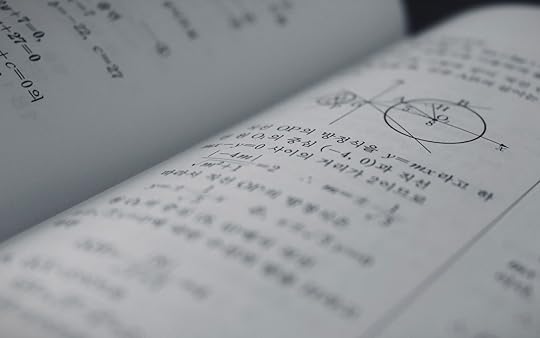
Both internal and external factors impact the development of crystallized intelligence.
Internal factors include your innate curiosity and motivation to learn new things. External factors are the surroundings that you grew up in — your family, educational institutions, and society in general.
Examples of Crystallized Intelligence
Crystal intellect is at work when you:
Answer questions related to history or geography in a quiz. (For example, when did Columbus first arrive in America?)
Learn and speak different languages.
Know the exact ingredients used to prepare your favorite dishes.
Learn new words in your native language.
Memorize new maths formulae or facts
Conduct a surgery on a patient.
Remember the demographic statistics of a country you’re reading about.
The good news is: since crystal intelligence relies on the accumulation of knowledge, it is usually maintained with age. It peaks and declines much later in life as compared to fluid intelligence.
Interestingly, research shows that elderly people are valuable as workers as they make up for a decline in fluid intelligence with crystallized intelligence.
Cautionary note: While stronger intelligence may give you a head start in life, it may not prevent you from being affected by Alzheimer’s disease.
You may wonder: do these two types of intelligence cooperate?
Can Fluid and Crystallized Intelligence Work Together?
Turns out, fluid and crystallized intelligence are great team players.
Even though they are two distinct types of intelligence that cover different cognitive abilities of the brain, they work together more often than you might imagine.
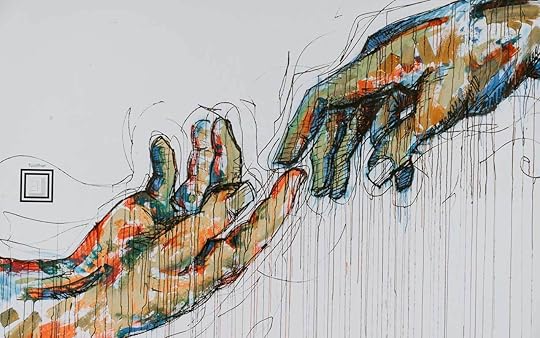
For example, when you DIY a table, you use the woodworking skills your dad taught you years ago. This is your crystal intelligence. You figure out which raw materials to use, which tools to use, and how to follow a detailed design.
You also use fluid intelligence to reason and find solutions to any hurdles you face — for example, maybe a certain tool is not available and you need to find a substitute.
This solution is then transferred to long-term memory and becomes part of your crystal intelligence. If you face the same problem in the distant future, the solution would be retrieved from your long term crystal memory.
Use of Fluid and Crystal Intelligence When Cooking
Here’s another example of the interwovenness of fluid and crystallized intelligence:
When you cook a meal, which actually provides a decent brain workout), you utilize your crystallized intelligence to understand and follow the recipe. However, if you modify the spices or find substitutes for some ingredients according to your tastes and dietary requirements, you are utilizing your fluid intelligence.
These forms of intelligence seem quite different, but is one more important than the other?
Is Fluid Intelligence More Important Than Crystallized?
Not at all.
Both types of intelligence are equally important to function well in everyday life.

As I discussed earlier, fluid intelligence is directly related to being creative and innovative (i.e., your street smarts). Crystal intelligence, on the other hand, relies on being book smart.
However, today’s education system and our dependence on technology may deprive our brain of developing its natural aptitude for creative problem-solving.
Educational institutes even resort to the Wechsler Intelligence Test or other IQ tests to determine the cognitive skills in students based only on crystal intelligence. Many cognitive training tasks also give more importance to developing crystallized intelligence.
However, I believe the goal should be to strengthen your overall intelligence — be it crystal or fluid.
Crystal intelligence is closely linked to long-term memories. Fluid intelligence is, however, associated with short-term memory or working memory.
Research says that if working memory is deficient, the ability to acquire knowledge and related skills will be limited. A study by Susan Gathercole and Tracy Alloway showed that “working memory functions as a bottleneck for learning in individual learning episodes required to improve knowledge.”
But what does that mean?
In simple terms: you need to develop your fluid intelligence to enable your crystal intelligence to work well!
Let’s look at how you can do just that.
5 Magnetic Ways to Sharpen Your Fluid and Crystallized Intelligence
Here are five great ways to improve both types of intelligence.
1. Create Memory Palaces
When you build memory palaces using the Magnetic Memory Method, you are using both fluid and crystal intelligence in ways that enable you to improve them.
The Magnetic Memory Method Memory Palace is a powerful way to train the brain regions that govern your fluid and crystal intelligence.
It’s also a better method for remembering and learning information than using other techniques like mind mapping on its own because you’re innovating and drawing upon existing mental content at the same time.
Plus, any time you can combine intelligence and memory strengthening, you get holistic improvement of all levels of memory. You can move short-term memory into long-term memory faster (and permanently) with a minimum amount of practice.
2. Get Creative
It is believed that to be creative, you don’t have to come up with original ideas all the time. You’re creative just by finding new connections between existing ideas.

This could be as simple as finding a new route to go to work, starting new eating habits, or adding new ingredients to a pasta recipe you’ve stuck to for years.
Or, if you’re an artist, simply abandon your tools for a while and wander outside or travel to a new place. Inspiration for your next masterpiece may strike you from unexpected places.
And sometimes constraints fuel creativity, so set yourself time and space limits to complete a project.
3. Challenge Your Brain
Technology has made everyday life so easy for all of us — so switching off is a great way to challenge your brain.
Remember the saying “use it or lose it” and unplug from your devices every once in a while. For instance, navigate to a new landmark in your city without a GPS.
Seeking new experiences, learning new skills, and staying busy with hobbies and people are great ways to keep your fluid and crystal intelligence sharp.
You might also learn a new language, watch a new genre of movies, read on a topic that is alien to you, or just try using your non-dominant hand for a few everyday activities.
4. Meditate Regularly
Mindfulness meditation is a way to engage new neural pathways in your brain. Research has proven that this neurostimulation can transform your body and brain positively.
This form of active brain training can improve your focused attention, long term retention and recall, and your working memory capacity, which are all important aspects of your fluid and crystallized intelligence.
5. Get a Good Night’s Sleep
Want to get a sharper memory? Get more sleep.
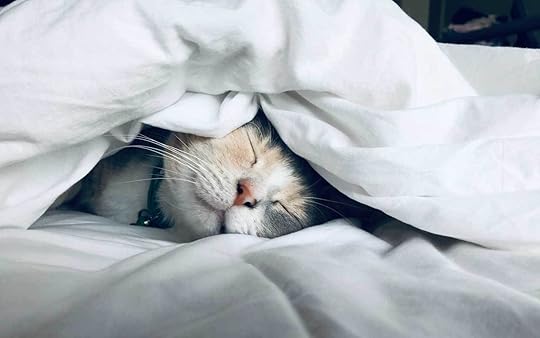
As counterintuitive as this may sound, sleep can sharpen your intellect. In fact, sleep is one of nature’s most ignored memory-boosters.
If you’re well-rested, you stay alert and attentive throughout the day — which positively affects your ability to retain more and learn new things like riding a car or learning a new language.
Boost Your Intelligence, Magnetically
Memory science is important and worth reading, but you are the ultimate scientist in the laboratory of your own memory and intelligence.
Why not get cracking at a new intelligence-boosting experiment with me today? Register for my free course, and I’ll send you my free memory improvement worksheets and videos.
The post Crystal And Fluid Intelligence: 5 Ways to Keep Them Sharp appeared first on Magnetic Memory Method - How to Memorize With A Memory Palace.
January 14, 2020
How to Memorize a Speech Fast (Without Sounding Like a Robot)
 Imagine this: you’re standing up in front of an audience and giving an important speech.
Imagine this: you’re standing up in front of an audience and giving an important speech.
Now tell me, how do you feel? Are your hands sweaty or your knees shaky? Is your stomach tied up in knots and feeling a bit queasy?
If you’re anything like me during my undergraduate years, maybe you even have a phobia of public speaking. Yes, it’s true. I once had a terrible aversion to giving speeches, because I took a medication for manic-depression that made me shake really, really badly.
Once, in a course on romantic poetry, I was supposed to give a speech. My hands shook, my papers rattled in my hands, and I couldn’t concentrate on my delivery of the speech… much less expressing my familiarity with the topic at hand!
Instead, I ended up frustrated and embarrassed. It was one of the most horrible moments of my scholarly career to be shaking so badly and yet have so much to say.
And to top it all off, the professor wouldn’t take me at my word — I had to go to the Behavioural Sciences Building to get a letter from the psychologist explaining that I could have an alternate assignment instead of being required to give the speech. This bad experience led to a fear and phobia of giving speeches that lasted for quite some time.
But here’s the good news: even if you have a fear of public speaking – most people do – there’s still hope. With the help of memory and a few other tricks I’ll teach you today, you can overcome your fear.
And I’ll let you in on a secret. Now, when I give a speech I really have a lot of fun!
So are you ready to kick your fear of public speaking to the curb and have fun with it instead? Let’s dive right in and take a look at how to memorize a speech — and how memorizing can help you overcome your public speaking fears.
Want to skip ahead to a particular section?
Memorizing a Speech Without Losing Your Place
How to Memorize a Speech: Tips and Techniques
Tip Number 1: Be Prepared
Tip Number 2: Relax, Relax, Relax
Tip Number 3: Don’t Make it a Big Deal
Tip Number 4: Know Your Body
Tip Number 5: Do Table Reads
Memory Palace Alternatives
The Best Way to Memorize a Speech: Create a Memory Palace
How to Memorize a Speech: Step by Step
Real-Life Examples of How to Remember a Speech
Recommended Reading for Memorizing a Speech
FAQs about Memorizing a Speech or Presentation
Have Fun Memorizing a Speech
You might be thinking… “but will your approach work for me?”
I can honestly say — yes! I’ve seen this method work not only for me, but also for clients of mine. Here’s one example:
Michael DeLeon wrote the other day and said:
“I’ve been training myself in the techniques of the Magnetic Memory Method. I’ve given two speeches that were, by far, the easiest for me to give because of the Magnetic Memory Method. I felt no pressure. I could relax and deliver the speech I wanted to give because there was never a fear of ‘I would lose my place.'”
So are you ready to learn some tips for memorizing a speech? Let’s start with a common fear: losing your place.
Memorizing a Speech Without Losing Your Place
When we talk about how to memorize a speech, one of the first things people often ask is what to do when you get lost. In this post, we’ll cover how to find your way quickly back, as well as a host of other issues that can arise during your speech.
We’ll also talk about Steal the Show: From Speeches, to Job Interviews, to Deal-Closing Pitches, How to Guarantee a Standing Ovation for all the Performances in Your Life, a great book by Michael Port that I’ve learned a lot from, as well as some tips I learned from my mentor about giving speeches.

The short answer is: a Memory Palace can help you be fearless, focused, and able to track back if you ever do lose your place. The longer answer? Keep reading!
To make the most of this post, take notes as you read, then start to carve a path forward to where you go out and give some kind of speech (even if it’s just to your friends and family).
We’ve got an action-packed post waiting for you, so let’s get started.
How to Memorize a Speech: Tips and Techniques
Before we talk through my top tips, let’s get one big question out of the way: what’s the point of learning to give (and memorize) a speech? Whether or not you’re using a memory technique, why do you want to learn how to do it?
Here are a few benefits to being a great public speaker:
It’s a highly marketable skill.
There are lots of companies that need someone to be able to present the value they offer – their expertise, unique selling proposition, value for the market, etc – and why customers should pick them. It’s the same for you — you want to be known as the person a company wants to hire, the one they want to promote, the one they want to give a raise.
Public speaking displays your expertise.
Your ability to speak coherently and clearly is a key indicator to both your employer and clients that you know your stuff. When you can speak from the top of your mind without hemming and hawing or stuttering, it lets your knowledge shine.
Stepping on stage develops courage.
Getting comfortable with public speaking takes practice — and getting out there and starting to give speeches (even if it’s just to a friend or two at first) will begin to build your courage muscle. It’s a win-win.
Speaking shows your personality.
As you practice giving speeches, you’ll begin to develop your own personal presentation style. And the more comfortable you get, the more your personality will shine.
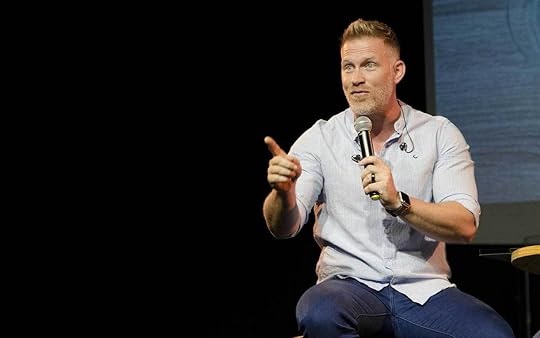
Giving speeches helps build relationships.
Getting out into the community allows you to connect with people in both your personal and business networks. And if you’re still in school, it can help you build connections with your teachers and your fellow students.
Public speaking sets you up as an expert in your field.
When you’re the one up on stage, it’s clear to the audience that you know what you’re talking about. You can prepare the road ahead by being known as the expert who has the courage to get up on stage and share their knowledge. Just look at Sunil Khatri’s speech success story.
It helps you deliver results to other people.
Right now, your audience doesn’t have a particular set of knowledge. When you get up on stage, you’re able to give them that knowledge — and package it in a way that helps them quickly absorb it. Plus, you can do so in a way that encourages them to take action, because they’ve seen you demonstrate how valuable it is from the stage.
Speaking can help you build your memory as you learn.
Learning to memorize a speech will help you build your memory as you go. Even if you do need notes in the beginning, you can still improve your memory as you practice your speech.
Bonus: it’s fun!
It’s not only a valuable skill, but being able to jump up on stage and speak off the top of your mind is actually a lot of fun!
Now you know the benefits of memorizing a speech, let’s take a look at a few tips to help you along the way.
Tip Number 1: Be Prepared
The number one best technique of all is to be prepared.
This means: do your research and have the knowledge in your head that you’re presenting on. This might be obvious, but a lot of people think they can skip this step.

If you’re nervous or worried, that sense of fear often comes from the fact that you don’t know your topic well enough. At the end of the day, be prepared with solid research and actual knowledge about your subject…
Because the number one memory tool you have — is to not have to use memory techniques.
You’re here to memorize a speech, but the best way to do that is to know what you’re talking about. It will help you avoid your fears about getting lost when you know your subject backwards and forwards.
Part of giving good speeches from memory is preparation — as you prepare, memorize the key information as you go along. There are a number of ways to do this:
Use a Mind Map
Mind mapping helps you prime your memory from the very beginning, by giving it structure in space.
Imagine you’re creating a mind map — you have your central image, which primes your mind to dig deep into your memory and create a mental image around the core topic, by name. You can also use a key word that’s big, bold, and centered in your attention.

This example Mind Map was created for one of my live stream presentations. I usually juggle for a few minutes before giving a speech to get my creative juices flowing.
This allows you to think in imagery and images placed in space, and also the connections you can make by having multiple key words arranged in space.
You can also turn a mind map into a Memory Palace.
Consider Content Mapping
If you decide to memorize your speech verbatim, this is another kind of mapping that can help you with your beats.
But what do we mean by beats? When you memorize verbatim, you may want to remember things like:
Where your pauses are,
Where on the stage you plan to turn and look at a particular part of the audience,
When you want to pull a prop from your pocket, or
Any other physical cues.
You might even plan to give a speech with another person and need to remember where their lines begin.
Hat tip to Steal the Show by Michael Port for this idea.
Read Additional Books
Once you create your original mind map, then you might consider reading two or three additional books on the topic.

For example, I recently did a livestream on the topic of how to memorize a speech. As part of my preparation, I read not only Michael Port’s Steal the Show, but also the Rhetorica ad Herennium and other books on rhetoric and speaking by authors like Matthew Clark and Dan Kennedy.
Know Your Audience
One fun way to engage with your audience is to know and mention the names of your host and audience. When I give talks on memorizing names, I make it a point to memorize every name in the room — and then I address audience members by name as I give my speech.
But even more important is to tailor your presentation and speech to that particular audience. This may mean memorizing things about the audience, or things about the individuals who will be present, so you can respond on the fly.
You won’t initially have the kind of information you need to do this, but it’s easy to find. Reach out to the person who invited you to give the speech – or ask your teacher or professor – and ask them what considerations they would like included in your speech.
It’s very powerful to tailor your speech to the audience and their specific interests or concerns.
Train Under Pressure
When you’re in the middle of a speech, you ideally want to keep moving forward — even if you make mistakes or something unexpected happens.
When you memorize your speech and train yourself to give it under any circumstances, it can help you find your place when the unexpected happens. You can then quickly find where you were and keep moving forward.
Now that you’re prepared, it’s time to let your hard work pay off.
Tip Number 2: Relax, Relax, Relax
The most important step of all is relaxation, and being willing to let go of your expectations.

When the light goes green and you’re live you can no longer control the outcome — but you can practice not being in control very early on. You do this through relaxation.
You will relax while you:
Prepare your research,
Memorize your speech,
Practice reciting what you’re going to say from memory,
Deliver your speech (by being relaxed ahead of time), and
Analyze how the speech went.
The more relaxed you are during each of these stages, the more you’ll be able to effectively analyze how your speaking engagement went. This gives you the chance to think through the results in a clinical fashion and improve, rather than judging yourself on your performance.
But how do you relax at each stage of preparation and memorization? There are a few techniques you can use.
Box Breathing
This is a breathing technique that’s widely attributed to a former Navy SEAL, who used the skill set to stay calm in combat situations.
To use this technique, think of a square and follow along with your breath.
Inhale to a count of five,
Hold the breath in for a count of five,
Exhale to a count of five,
Hold the breath out for a count of five, and then
Repeat as necessary.
This technique is really good for activating your parasympathetic nervous system and giving you some space between you and your monkey mind. The more you’re able to relax, the more you can be present to what’s happening — instead of overthinking.
You might wonder: why does the monkey mind go on and on?
Well, it’s worried what people are going to think about you! It’s worried about what happens if you make a mistake. It’s worried about what happens if people think you’re going to make a mistake.
Prepare to Make Mistakes
So here’s the deal… I guarantee you’re going to make some kind of mistake. But — it’s not really a mistake if you don’t pay attention to it. If you’re relaxed and you just move on, the audience is less likely to notice that you made a mistake than if you get flustered and lost.
Everyone stumbles over their tongue every once in a while, and the more you speak the more it will happen to you. The way you overcome mistakes is to be relaxed and just keep going.
Remember: it’s all about practice.
Meditate
I highly recommend meditation for anyone preparing to give a speech.
It really gives you distance between what’s going on, and quiets the monkey mind so you don’t get caught up in mental commentary as you’re speaking. It allows you to roll with the punches when the punches come.
Meditation is great to help you be aware of different self-criticism that may come up and to keep going anyway. It also helps you let go of the outcome, because you can’t control what’s going to happen.
Technical situations that are out of your control? Venue issues that impede your flow? No problem — meditation helps you keep going.
Meditation also helps with the next tip on our list.
Tip Number 3: Don’t Make it a Big Deal
Whatever you do, don’t turn memorization into some sort of Holy Grail.

As I learned from my speaking mentor (who coached me through getting better on camera), there’s more to giving a speech than just reciting from memory.
He told me:
“Yeah, you can memorize this stuff, but it looks like you’re reciting from your mind. Nobody wants to watch this. Very few people are going to be impressed by being bored by your precision recall. It’s just not something that is entertaining or engaging.“
And when I did my first university lectures, using hundreds and hundreds and hundreds of pages of lecture notes, I quickly understood that it was much more in the service of my students to deliver from memory and key words than to be reading out these long speeches.
Soon, I abandoned my notes and spoke very freely — which made for much more interesting lectures and served my students better in the end.
It’s a process of practicing, refining, analyzing what you’re doing, getting feedback, and trying again.
And through this process of repetition, you begin to realize that giving a speech is neither the end of the world, nor the most important thing you’ll ever do. It’s simply a means to an end and can be a fun experience.
Another tip to help make your speaking experience pleasant is to “know thyself.”
Tip Number 4: Know Your Body
Your body is like any other machine: it needs to be properly maintained and cared for to achieve peak performance.
When it comes to preparing to give a speech, it’s beneficial to be hydrated and well-rested the day before your speaking engagement.
Some people might choose to fast the day before a speech to give them mental clarity, while others wouldn’t dream of fasting because it makes them weak.
Along those lines, observe how your dietary choices affect your body. If you eat or drink the wrong thing before giving a speech, it can be very draining, since your body is processing stuff that takes energy away from your mind or makes you feel terrible. This takes focus away from the task at hand.
(For more focus tips, I suggest Nir Eyal’s Indistractable.)
Avoid any foods that make you dull, tired, or irritated. Instead, choose foods that help you stay calm and clear. Pick your battles, and know how certain foods make you feel as you choose your pre-speech diet.
Finally, let’s look at a tip the pros use when preparing to memorize a speech.
Tip Number 5: Do Table Reads
There are a few ways you can approach a table read, but the most important elements are to read out loud whatever it is you’re going to deliver — and do it seated with others so you can really study your body in a seated position.

Practice giving a speech in front of friends before taking it to the stage.
Then, be sure to also practice it standing and mobile, like you will be when you deliver the speech, with an audience present.
You do this because your writing is very different than it sounds read out loud. Because of this, delivering your speech can be very strange if you haven’t written it specifically as a speech. The table read helps you correct what you’ve written so it sounds natural while you’re speaking out loud.
And if you can’t find other people to do a table read with you… do one by yourself!
You can practice on camera — this is a great way to hear your speech externally and objectively. If you work from key words or acronyms instead of a written script, you can also get the recording transcribed.
When I prepare for a speech, I almost always record my preparation and get it transcribed. Then, I can look at 1) how it reads, 2) what it sounds like, and 3) what to add or take away.
Recording yourself doesn’t need to be complicated. You can use your smartphone to record, and use a service like Rev.com to transcribe.
If you can, share your script or transcription with other people. Ask them what’s too much, and if there’s anything you should take away. You don’t have to take their opinion, but it can be helpful to get an outside viewpoint or two.
And, be sure to ask qualified people who will tell you the truth — and that their truth is coming from a place of expertise and proper context.
Next, let’s look at a few alternatives to using a Memory Palace.
Memory Palace Alternatives
While I believe that using a Memory Palace is the best way to memorize a speech, there are other techniques and tools you can use instead.
Use Index Cards or Flashcards
As you prepare to deliver your speech, you can have all your points on index cards and memorize them by rote learning.

Index cards are a great way of organizing your points before placing them in a Memory Palace.
Though I’ll be honest and say I’m not a fan of learning by rote memorization. It can work, but it will take a lot longer than necessary.
In comparison, if you have a Memory Palace built out and you memorize point by point, you’ll use creative elaboration and get to “stickiness” much faster.
Plus, you won’t go blank, because you’ll have at least some idea of where you encoded that information. If you get lost, you’ll be able to get back to where you were by referring to your magnetic imagery.
Create Number Rhymes
You can also memorize speeches by number rhyme.
What this means is having a system where “one is a bun, two is a shoe, three is a bee, four is a door, five is a hive, six is sticks,” etc. Then, your first point is associated with the first rhyme and so on. You would then go through your speech and make the mental connections.
For example, if your second point was about the Hindenburg, you would have the Hindenburg interacting somehow with a shoe.
This method is quite limited, but it can work depending on your existing expertise. I personally would cross-index this approach or work in conjunction with a Memory Palace. This means your “one is a bun” is in a specific place inside the Memory Palace.
Use a Pegword Method
Now, before I go into any kind of explanation for the pegword method, please note that I don’t recommend it. And I’ll tell you why in a moment.
The pegword method is a simple memory technique for remembering lists of information.
Each pegword system involves three stages:
Setting up and remembering the system,
Encoding new information within the system, and
Recalling the information by triggering the system.
In the first stage, you learn a standard set of “peg” words — number rhyme pairs or letters of the alphabet. Then, you can use a rhyming, meaning, alphabet, or look-alike method.
The alphabet list is very similar to the number rhyme: your first point is linked with an apple, because the letter A is an apple in your system.
You can use a free-floating 00 to 99 PAO. So if your first image is the sad tragedy mask, as mine is for 01, then you would have your first point linked to a tragedy mask. If your second image is the sun, your second point would be linked to the sun, and so on.
You could also just use free-floating linking. Just randomly come up with images and have them linked together, without a memory palace.
I don’t recommend any of those things, because, as we saw in our opening comment from Michael, he says he was using the Magnetic Memory Method to deliver the speech he wanted to give, and it was successful because “there was never a fear of ‘I would lose my place.’”
You may be wondering, “So, Anthony. If you don’t recommend these techniques, what do you recommend?”
The Best Way to Memorize a Speech
If I’m totally honest, the best way to memorize a speech is – hands down – to use a Memory Palace.

Yes, I also recommend using Memory Palaces for most memorization — but I do that because they work!
Let’s take a look at why creating a Memory Palace is best, and how to do it.
Top Technique to Help You Memorize a Speech: Create a Memory Palace
The memory palace is king when it comes to memorizing a speech.
Why? Because it enables you to use space in the world to memorize exactly what you want to deliver… in the order you want to deliver it. As you move through your Memory Palace, you’re just ticking off boxes, spatially speaking.
You know when you’ve finished a specific section of your speech, and you know exactly where you are in space. This is why it’s easier to find your place if you momentarily get lost.
And did you know that Memory Palaces have been around for a *really* long time?
Is There a Roman Orator Hiding in Your Memory Palace?
Historically, Memory Palaces had an important place. The term “in the first place” comes from the great tradition of using memory techniques.
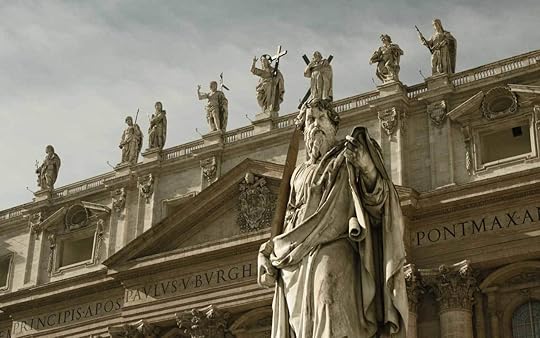
In fact, when Roman orators would begin their speeches, they would say, “In the first place, we need to talk about the great famine and how we’re going to tackle it.” And they would be literally referring to the “first place” in their Memory Palace.
Now perhaps they used images of wheat being eaten by insects to remind them that famine was part of the first station in their Memory Palace, and maybe they had all sorts of other images to help them walk through the rooms and stations.
Whatever the case, the technique they used, “in the first place,” and “in the second place,” is very powerful — and it’s something that’s still being used today!
Let’s look at a specific example of how a real person uses this technique: Jonathan Levi and his TED Talk “What if Schools Taught us How to Learn?“
The Memory Palace Jonathan used in this speech is one I helped him create. In this TED Talk, he shared not only that he was using a Memory Palace, but you can also see it up on the screen during his talk:

Jonathan Levi’s Memory Palace for his TEDx, a speech he memorized verbatim.
You can see how much he had to cover in his speech, and how the Memory Palace was helpful as he mentally walked through it while giving the talk.
Now you’ve seen a Memory Palace in action during a speech, let’s take a look at what kinds of things you might choose to memorize.
What to Memorize Using Your Mind Palace
While this technique can be used to memorize a speech verbatim, I don’t recommend it. In my opinion, it’s not the best way to give a speech, because reciting from memory often ends up sounding… well, like you’re reciting from memory.
Instead, memorize the following key pieces of your speech.
1. Key Words and Acronyms
Instead of memorizing verbatim and sounding like you’re reciting from memory, try to memorize key words and phrases out of your speech.
When you prepare in this way, you can use your Memory Palace to memorize key words or acronyms that will allow you to unlock your speech as you go. You can also use it for data you don’t want to look at from your slides.
2. Specific Details
Your Memory Palace is a great place to store things like names, dates, and specific terminology.
It’s much more interesting for your audience to watch you look at them and pull dates out of your head, rather than needing to look at the PowerPoint or your notes. Instead, you can easily remember the names of people you’re referring to, any dates associated with them, and other details you need to keep in your head.
3. Quotes
Instead of getting your little laser pointer out and reading a quote, being able to recite it from memory is also very powerful!
Next, let’s look at a couple of tips to make memorizing with a Memory Palace easier.
Tips for Memorizing a Speech
Here’s something to consider: you don’t want to visit your Memory Palace and just recite what you find there.
Instead, you want to have access to those facts, names, dates, terminology, and quotes — and then you want to be able to recite from memory. Similarly, you want to deliver your speech with the assistance of your Memory Palace, rather than drawing your words straight out of the stations in your mind.
Memory Palaces are best used to get information into your long-term memory. This means you don’t need them to deliver the speech, but they are there as a safety net in case you need to retrieve them.
One last reminder before we dive into the step-by-step of how to remember a speech: think about why you want to memorize it.
Why You Shouldn’t Memorize a Speech
It may seem paradoxical… here I am writing a post about how to memorize a speech, and I’m telling you NOT to memorize your speech. What gives?
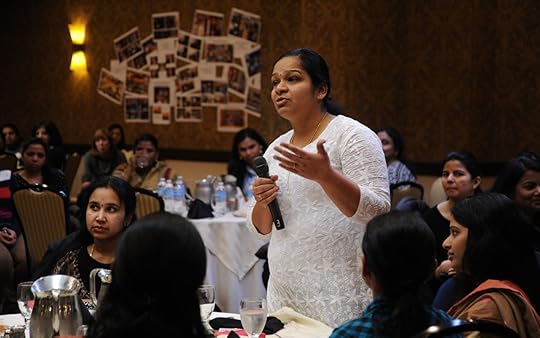
Truthfully, I never actually memorize speeches, because the delivery sounds very stilted.
Quoting is one thing (and it’s sometimes nice to be able to quote things), but it’s not that interesting to listen to a fully-memorized speech.
When I give a speech, I structure it very differently, using the process we’re talking about today.
I have some key words to talk about.
I have acronyms built into place to guide my delivery, and then
I practice a couple of times in front of the camera.
Ideally, when you give your speech, you’re just speaking very loosely, openly, and warmly. This way, it sounds like you’re talking from one person to another.
Framing how you use memorized material can be helpful as well, so people know memorized material is headed their way — and you can be fluid in your presentation style.
Now that you have some history under your belt – and considerations around how you’ll use the material you’re getting ready to memorize – let’s take the memorization process one step at a time.
How to Memorize a Speech: Step by Step
Now that you know all of the parts and pieces that go into the process, let’s break things down one step at a time.
1. Get Prepared
If I’ve said it once, I’ve said it a thousand times: preparation is everything.
While you prepare and write out your speech, start memorizing information as you go. I would recommend using a mind map during this stage, so you can start with a solid grasp of your spatial orientation.
This early stage will give you a suggestion of how to organize things later, when you’re putting it all into your Memory Palace. You might even think of the mind map as a first draft of your Memory Palace.
In particular, start to memorize any key words, facts, dates, names, or quotes you want to bring in.
Next, you’ll begin to actually write out what you want to say.
2. Write Your Speech
Remember, even though I write out my speeches, I very rarely deliver anything verbatim.

My mentor once told me, “You can memorize verbatim, but you look like you’re accessing from memory. Be more free.” The way I took his advice was to write the speech and then organize it into key words and acronyms.
Using a mind map in this step is really helpful — but even without it, organizing your speech into acronyms is very powerful.
Next, you’ll begin to memorize those pieces.
3. Memorize Your Key Words
You’ll take the key words and acronyms from your speech and start to memorize them at the stations in your Memory Palace.
If you don’t know how to create a Memory Palace, you can pick up your free memory kit.
Or, at least make sure you’re using the masterclass – if you have it – to deeply understand what to do with your Memory Palaces.
Then, you’ll use repetition.
4. Use the “Big Five”
Once you’ve memorized your key words and acronyms, then it’s time to use the Big Five at least five times.
What does that mean?
Write out what you’ve memorized, from memory.
Speak it out loud, either to yourself or someone else.
Record yourself speaking and then listen to the recording.
Get your recording transcribed and read it over.
And practice, practice, practice!
Finally, you’ll practice some more.
5. Practice
This may feel like I’m overstating, but the importance of practicing your speech is paramount!
Practice your speech in front of the camera or in front of friends. Use the relaxation tips I shared earlier in the post. And get as comfortable as you possibly can before you jump up on that stage.
Finally, let’s take a look at a couple of real-life examples, so you can see how this methodology works in practice.
Real-Life Examples of How to Remember a Speech
In this section, we’ll talk about how to memorize a speech quickly, the way I do it.

There are a couple of speeches I give regularly. Both the NAME and FREE speech are very fluid and packaged, and I do them entirely from memory (from acronyms).
Let’s look at both speeches, starting with…
The NAME Speech
When I give this speech, I talk about how to memorize names.
I follow the acronym “NAME.”
Noticing,
Making Associations,
Using Memory Palaces, and
Managing Expectations.
Within 20 minutes I’m done and everyone in that room can memorize any name they want!
Does that mean my speech is a little bit different every time? Of course, but this method is super simple to follow, very structured, and gives me the chance to just talk about the topic.
Next, let’s look at…
The FREE Speech
The same thing goes for this particular speech. When I give this speech, I run through the acronym:
Frequency,
Relevance,
Edutainment, and
Engagement.
What I find fun about using acronyms to memorize your speech is that you can also use them backward. Sometimes I’ll write out “FREE” on the board, and then proceed to work up from the bottom. It’s a great way to catch the audience’s attention.
Finally, let’s take a look at a couple of other mini-speeches.
SIP and DOC Mini Speeches
For SIP, we talk about taking things “one sip at a time.”
Study the memory techniques thoroughly and consistently,
Implement what you learn from your study, and then
Practice with the information that improves your life.
This is a very simple mini-speech that’s powerful and easy to follow — and it drops easily into just about any topic you’re talking about.
Likewise with the DOC speech:
Doing is the Origin of Confidence,
Doing is the Origin of Consistency,
Doing is the Origin of Clarity,
Doing is the Origin of Creativity, and
Doing is the Origin of Control over your mind.
It has a nice rhetorical effect because you have this rhythm with a bit of repetition. And you can drop this into any old speech you want.
Of course, you will create your own acronyms that apply to your topic of expertise, because it’s much more interesting and effective.
So if you want to give a speech this way, break it down into four key words that make an acronym, and then put them into a Memory Palace. And if you know how to use the Pillar technique or you have Memory Palace networks, you can have multiple acronyms.
Hopefully, by this point, your interest has been piqued. And maybe you even want to learn more about how to give a great speech.
Recommended Reading for Memorizing a Speech
If so, I would highly recommend that anybody who’s interested in giving speeches read Michael Port’s book Steal the Show: From Speeches, to Job Interviews, to Deal-Closing Pitches, How to Guarantee a Standing Ovation for all the Performances in Your Life.
It’s a very good book, and will give you many more ideas than we’ve talked about today. I learned the proper way to table read from this book, and use the technique every time I prepare to give a speech.
Finally, these are the questions I get a lot about speech memorization.
FAQs about Memorizing a Speech or Presentation
If you’ve ever wondered about the best way to memorize a speech, let’s get your questions answered.

Q: How long does it take to memorize a speech?
A: It depends on the length of your speech.
If you have solid compression, you should be able to memorize 100 words a day. And if you’re talking about memorizing a speech verbatim, this typically involves a lot of skill and will take a bit longer.
Q: How do you memorize a speech without notes?
A: It’s a multi-step process.
Mind Map your speech based on one big idea.
Place the individual ideas on index cards so you can shift them around in order of importance. (Kind of like how screenwriters organize scenes in a movie as they’re working out the plot.)
Create a Memory Palace for memorizing the key points of the speech.
If possible, organize the points into an acronym key word. (Like SIP/DOC, etc).
With or without an acronym key word, memorize the key points – or verbatim sentences or quotes – using the Memory Palace. (Because both a speech and a Memory Palace journey are linear, it makes it easy to hit points and quotes in the right order).
Practice the speech as many times as possible. Here’s how to create a routine that works.
And remember: the script of a movie is invisible and yet, like the rails of a rollercoaster, absolutely essential to the ride. The same goes for speeches. No one needs to see the structure, but they will feel the same force of focus and guidance as you move from point to point because the structure is in place.
Q: How do you remember what to say in a presentation?
A: Let’s be honest; a presentation and a speech are basically the same thing. The biggest difference is that a presentation usually involves slides, and a speech may or may not.
Your slides are there for the audience, not for you. It helps you to structure your presentation and helps the audience stay focused. Slides should not be your memory aid!
So if you’re giving a presentation, follow the same procedure outlined in this post, and pay close attention to how you build your Memory Palace to include slide transitions.
Q: How can you memorize a speech in one night?
A: If you’re memorizing a 20-minute speech, you should be able to memorize the entire thing by the following day.
Use key words for speeches of 100 or 200 words. Know yourself and the best time to work for you — memorize your speech during the time of day when you have the most energy.
Q: Do you recommend Toastmasters?
A: I neither recommend nor not recommend Toastmasters.
It depends on what your goal is. What do you want to get out of Toastmasters? If participating can get you to that goal, then it’s worth a try.
One way to think about this is: how can you find a way to be around people who are already very good at giving speeches? It’s better (and faster) to learn from being around excellent speakers. So if your local Toastmasters has a bunch of excellent speakers, that could be a good fit.
Now you know how to remember a speech, it’s time to get out there and start practicing!
Have Fun Memorizing a Speech
Think back to how giving speeches used to make you feel.
Sweaty. Queasy. Shaking just thinking about stepping up on stage.
Now, think about how confident and powerful you can feel standing up on stage as you deliver your expertise to a rapt audience.
This second scenario isn’t just possible… it’s probable. All you have to do is follow the tips and techniques in this post, and before you know it you’ll be a cool and confident public speaker.
But maybe you’re thinking, “I don’t know how to get started — how can I give my first speech?” I would recommend to everybody, if you haven’t given a speech in your life, make an occasion to go out and give a speech, and give it in different ways.
Give a number of speeches, even if it’s just to a small audience or a close group of friends. This simple practice will help develop both your crystal and fluid intelligence – both needed for developing the skill of speaking. And try different formats: recite from a piece of paper, do partial recall from memory, speak verbatim from memory, or any way you prefer.
And whatever you do, have fun with it! Giving speeches is a great way to play a giant, satisfying brain game — as well as delivering value to others and setting yourself up as an expert in your field.
If you’re still feeling uncertain, there’s a mini-course in the Magnetic Memory Method Masterclass about memorizing speeches that goes deeper into this topic.
I suggest you start with the free course first and if you’re interested in speeches, and then dive into this part of the Masterclass after completing the core training. Sign up for the free course and make your memory magnetic.
The post How to Memorize a Speech Fast (Without Sounding Like a Robot) appeared first on Magnetic Memory Method - How to Memorize With A Memory Palace.
January 8, 2020
Simon Luisi On Expanding The Major System In Your Memory Castle
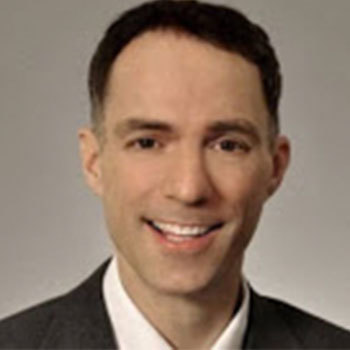 Val Valentino, better known as the Masked Magician became a household name with the television series Breaking the Magician’s Code: Magic’s Biggest Secrets Finally Revealed after a longtime stint as a casino show performer in Las Vegas.
Val Valentino, better known as the Masked Magician became a household name with the television series Breaking the Magician’s Code: Magic’s Biggest Secrets Finally Revealed after a longtime stint as a casino show performer in Las Vegas.
In the four-part special, and subsequent series Valentino exposed the techniques behind everything from levitation, to pulling a rabbit out of a hat, to the death-defying buried alive tricks.
He faced a wave of backlash and even lawsuits from small-circuit magicians who were forced to retire their no longer mysterious tricks, but Valentino defended his actions that revealing these secrets would encourage children to learn magic themselves, that the “magic” in the trick was more in showmanship than the trick itself.
Memory competitors are a lot like magicians, aren’t they? It seems like their stunts are something out of an illusionist’s handbook. Memorizing 130 random words in a minute? 1170 binary digits memorized in five minutes? It seems impossible.
But unlike secrecy in the world of magic, memory competitors are eager to share their techniques. These traditions that they utilize for honing their skills are thousands of years old and begging to be shared.

In this interview, I sit down to chat with Simon Luisi, founder and chairperson of the Canadian Memory Championships. He is a keynote speaker on memory and inventor of the directional memory method for card memorization. He is also a Gold Award winner for Toastmasters and a chess enthusiast.
Pictured above, you’ll see James Gerwing who won the 2019 competition. Simon is behind him to the right. (James took the Magnetic Memory Method Masterclass and you can hear us discussing his win on this episode.)
Simon and I discuss the skills necessary for memory competition, how they can improve your day-to-day as a lifelong learner, and why a personal memory training routine is necessary for any kind of personal development in memory arts.
If you know that a one-size-fits-all practice isn’t for you…if you’ve tried other techniques and failed because they were too rigid…or you just didn’t know where to begin…
If you want to break into the world of memory competitions, but believed those athletes to be “way out of your league”…
Or you just want to understand the hype and what the Major Method’s all about…
This podcast is for you.
All you have to do is press play down below to listen in on:
Why Simon prefers the term Memory Castle to Memory Palace, what’s the difference, and which one you should use
What’s required (or not) to participate in memory competitions (it’s easier than you may have been led to believe!)
Which memory disciplines to devote daily practice to to become a champion of memory…even if you don’t ever compete
The reason a distraction-free study zone isn’t ideal for optimal memory training, especially if you study tough subjects
How memory competitions can be revamped in order to give a real challenge
Simon’s tweak to the Major System that revolutionized his practice (and it can do the same for you and might be interesting, even if you’re using the Dominic System!)
Why customization and self-leadership in memory systems is important
The reason to be a self-learner if you truly want to improve your memory
How photography and film exposure relates to memory training and time (well-spent) in practice
Further Resources on the Web, this podcast, and the MMM Blog:
Simon’s official home on the web
The Canadian Memory Championships
Memory Athlete Braden Adams On The Benefits Of Memory Competition
Katie Kermode On Memory Competition and Casual, Everyday Mnemonics
The post Simon Luisi On Expanding The Major System In Your Memory Castle appeared first on Magnetic Memory Method - How to Memorize With A Memory Palace.
December 30, 2019
How to Memorize a Textbook: A 10-Step Cheatsheet
Post updated 12/30/19
Exams loom on the horizon and you’re staring at a stack of unread textbooks so large it would make any sane student shake in their boots.
Maybe you got behind in your reading over the course of the semester…
Or maybe your professor assigned additional reading you haven’t gotten around to yet…
Whatever the case, you have a ton of information to memorize before your exams roll around, and you’re feeling the pressure.
Well, guess what?
You are not alone! In fact, almost every student ends up feeling like this as the end of the semester approaches. And hardly a week goes by that I’m not asked about how to memorize a textbook and textbook memorization.
The good news is: memorizing a textbook is not as difficult as it may seem.
At the end of the day, it’s not just about memorizing — that would be an utter waste of time!
Instead, the real goal is to understand the books you read. And more than just understanding the content, you want to use the textbooks you place in memory to create new knowledge.
In this post, you’ll learn how to:
Correctly set your expectations of what the book will contain
Understand why you need to read the book (or if you actually need to!)
Quickly determine how much of the book you really need to read
Make a dedicated Memory Palace system to memorize the parts you really need
Learn how to take notes from a textbook onto index cards or flashcards, and
Determine how much time you’ll need to practice the information you’ve memorized
If you want to jump to a particular section, you can do that here:
How to Memorize a Textbook vs a Book
Do You Really Need to Memorize a Book Verbatim?
Set Yourself Up For Success
How to Memorize a Textbook (Realistically)
Examine the book
Make an equation
Get index cards
Find the big points and jot them down
Make use of your Memory Palace
Create crazy imagery to help you recall the info
Stick each crazy image onto a Memory Palace station for recall
Test yourself before the teacher does
Let the info grow into knowledge
Bonus! Save your knowledge for later
Example: How to Memorize Verbatim
Bonus Example: How to Memorize a Formula
How to Study a Textbook for Maximum Retention
Want this post in infographic form?

So are you ready to learn how to memorize a textbook, the right way?
Let’s get started.
The Question That Inspired This Post
So you may be wondering: Hey Anthony, if people have been asking you about this topic for so long, what finally made you decide to write about it?
Well, the truth is, I’ve written about textbook (and book) memorization before, just never in the context of memorizing an entire textbook.
You can check out my post about how to memorize a chapter out of a textbook. And you might also be interested in another post I wrote, about how students with dyslexia can still ace their exams.
In the end, the reason is simple: I decided to write this post and record a podcast to help out one of my audience members.
Here’s what this struggling student wrote:
“Hi Anthony. I want to memorize some physics, chemistry, and math formulas, and also some texts that I have to memorize verbatim, but it needs a lot of Memory Palaces and too much time. Plus, I don’t know how to memorize formulas.
For instance, memorizing sin(A+B)=AcosB+cos .
Do I need just one Loci, and how do I memorize this? Of course, this is a very simple formula, but exams are coming! I need your help.”
Now that we know why this student needs help, let’s quickly talk about the differences between a textbook and other kinds of books.
How to Memorize a Textbook vs a Book
For the purposes of this post, we’ll use the words “book” and “textbook” interchangeably.
When it comes right down to it, the only real difference is that someone has called a textbook a textbook. Other than that, they’re remarkably similar — pages stuck between two covers with a spine.
Very little else differentiates them, except for some signature that has been applied to them by the author or publisher. Mind you, textbooks often come out in multiple editions, and a quick win is to be aware of how recently the edition you’re reading appeared on the market. You can sometimes find a nearly identical (and much cheaper) version from the year before.
But overall, a book is a book, by any other name.
And whether it’s a book or a textbook (even boring books), the first question you should always ask is: do I actually have to memorize this entire textbook verbatim?
Do You Really Need to Memorize a Book Verbatim?
One of the things I always ask people when they come to me with this question is: why?
Why do you need to memorize the textbook verbatim? Are you certain you need to memorize the whole thing – or even long passages – verbatim? What will memorizing the whole textbook get you?
If it’s just speed that you’re after, think again about how to study fast with this guide to high volume learning at speed.
There are certainly ways to memorize long passages of text word-for-word that are 100% effective. There are people who are known to have done it.
But, if you don’t absolutely have to put in the time and effort to memorize verbatim, why would you?
Instead, what if you could learn something deeply enough to be able to discuss it, to connect it, and to frame it in a certain context?
Chances are, memorizing in this way will not only be easier, but also more effective. Memorizing verbatim is rarely necessary and the mind will fill in the blanks if you structure your approach correctly.
So in this post, what I really want to teach you is the power of memorizing select material from a textbook.
Your first step, as with any task that’s worth doing, is to lay a strong foundation.
Set Yourself Up For Success
Now, let’s be honest for a minute. If your exams are coming up tomorrow or the next day, this approach probably isn’t going to work for you.
In an ideal situation, you would take the time to dig your wells before you’re thirsty. What that means in this context is that you want to know what Memory Palaces are, and have yours set up and comfortable before you start to study for your exams.
You could build a ladder to the moon with all the different memorization techniques out there, but I teach a very particular approach called the Magnetic Memory Method. You may have heard of it, especially if you’re a regular reader.
And because I teach this specific approach, I would recommend that you get yourself set up before crunch time — before exams are staring you down, making your palms sweaty and giving you nightmares!
My approach uses location-based memorization strategies, all based around Memory Palaces. You’ll need more than one Memory Palace, and you’ll need to do some self-exploration. But the good news is… it’s super simple to do, and the process is a lot of fun!
The first step in the process is to have a carefully defined Memory Palace.
Before you ever pick up a book, even if it’s scriptural, you’ll determine how much material you want to memorize from it. And then you’ll create a Memory Palace in advance so you can recall that information with ease when you need it.
But what if you’re new here, and you’ve never created a Memory Palace before? I’ve got you covered — grab my free 4-video memory course below, and the series will get you up to speed.
We’ll talk more about how to use your Memory Palaces later in this post.
Second, you will get in the right mindset for studying.
Setting a good mental attitude is key, before you even pick up the book. This allows you to mentally take away the most essential information.
And part of getting into the proper mindset has to do with relaxation. Before diving into any memory technique, I always take a moment to chill out and relax. Chillax, if you prefer. I do this by using traditional meditation techniques.
Now, some people have a very specific vision of meditation and what it means, but for our purposes, it doesn’t have to be complicated.
Meditation, in my mind, is as simple as sitting with your back and neck straight, imagining there’s a hook in the top of your head attached to a string that’s pulling you straight up. Then, you just sit there and breathe.
Some people believe that meditation is about emptying your mind — here are two of my favorite metaphors:
You’re sitting on the bank of a river. Your thoughts are the river, and you just watch them go by. Then, any time you find yourself being sucked away by the river you just bring yourself back to the shore and watch the river again.
Imagine an elephant that’s tied to a chain on the ground. The elephant – your mind – is romping around like crazy. You tie it to the ground with a stake, and then a couple of seconds later, you have to go get it and tie it down again. And with enough training, you can get the elephant to sit down and go to sleep.
That second metaphor – the mind as an elephant – is a bit more appropriate for memory techniques.
Alan Watts said that meditation should have no goal whatsoever — it should be sitting just to sit. And in this Tim Ferriss podcast, Sam Harris says, “all you’re doing is paying exquisitely close and non-judgmental attention to whatever you’re experiencing.”
So even if you can’t get your metaphorical elephant to stop running off, still take a moment to sit and breathe. Take the time to chillax before you start memorizing.
This allows you to approach memorization with the right attitude: still, gentle, not fighting for or clamoring after anything. You’re just being… and absorbing information. You might even think about it like this: you are a being, and the information is also like a being. You get to absorb that other being into you, something you can bring into yourself!
And if meditation isn’t your thing, you can also do some progressive muscle relaxation exercises or pendulum breathing — this combines physical processes with a particular way of breathing. Or maybe you can listen to some music to get you ready to study.
Now that you’re relaxed and ready to become a metaphorical knowledge sponge, let’s break down the memorization process step by step.
How to Memorize a Textbook (Realistically)
When I was studying for my doctoral exams – and later for my dissertation defense – I needed to read a total of 500 books to be able to sit for the exams and write my dissertation.
500 books. No exaggeration and I’m not kidding.
(In fact, if you read my post about how to memorize a chapter in a textbook, you’ll see photographic evidence of me carrying a stack of 20 or 30 of those books. I carried many, many piles like that from the library stacks to the private office I had access to in the Robarts Library in Toronto.)
The good news for you is that you get to learn from my extensive studying experience — how I operate when I’m conducting research or want to memorize the contents of a book. (You can also use this same method to memorize a novel, if you’re reading between the lines…)
Quick note: looking back at the question from our intrepid reader, you’ll notice that they use the word “loci.” I don’t use that word myself, because the Magnetic Memory Method is much more specific.
There are operational factors in the 10-step method I teach that may not seem to involve memorization. But trust me, each step is essential to the Magnetic Memory Method of textbook memorization.
Remember: before you do anything else, have a carefully defined Memory Palace that involves a location you’re intimately familiar with. I usually chart out at least 10 – but sometimes up to 50 – stations. Sometimes I even use an entire room or spots within a room.
Let’s call that step zero: create your Memory Palace.
A Memory Palace is a mental construct, based on a real location. You use different spots inside the Memory Palace to store information along a very well-constructed journey. Those spots are called “stations” — an entire room is a macro station, and a spot within that room is a micro station (like a bed, desk, or chair). You can leave associative imagery in those locations, so you can then go back along the journey in your mental construct, decode the images, and recall the information you left there.
Now that you have step “zero” behind you, let’s dive in to the 10 steps to help you memorize a textbook.
1. Examine the book
Now we get to the good stuff! Take your textbook, and take a good look at it:
Look at the front cover.
Look at the back cover.
Look over the introduction.
Read the conclusion, and
Be sure to scan through the index, if your book has one.
And read the colophon page — that’s the place where they include information about the book’s publication, like the place of publication, the publisher, and the publication date. If you didn’t know what a colophon page is, look it up. It’s fascinating. I also find the table of contents of a book to be very interesting.
These parts of the book are what Gerard Genette called the “paratext.” This means the text beside the text. This step takes about five minutes and effectively trains your brain to understand the scope and the dimension of the book with respect to the topic.
Not included in that five-minute estimate is the time it takes to read the conclusion, which could be a much longer process. So why should you take the extra time to read the conclusion?
Partially, so you can judge whether or not the author’s conclusion about their subject was profound enough to warrant reading the book in the first place! Sometimes when you read a conclusion, you’ll realize that the author hasn’t arrived at any conclusion that makes it worth reading the process or the argument that substantiates what the author concluded.
Okay. So maybe that’s a little judgmental. It’s certainly not a foolproof way to decide what to read. But, when you have 500 books on your plate it’s worth taking the time to determine whether or not the book warrants all that reading. You only have so many hours before your exam, after all.
The conclusion (and introduction) will also give you clues as to where the information is in the book — or at least the important information. And this location data is often included in the context of the concluding remarks, which can be quite helpful.
For example, the author might say, “In chapter one I do this, in chapter two I talk about this, and in chapter three I cover that.”
Next, you’ll make some foundational decisions.
2. Make an equation
When I take a look at a textbook, I decide in advance how many pieces of information I want to retain from it.
This is what the Magnetic Memory Method calls the “principle of predetermination.” It’s not an arbitrary or random decision. Instead, you will consider the length of the book and the purpose of your studying. Is this for an oral exam or an essay?
Using this method creates an understanding of what your goal is, and what the outcome would be. It creates a border or frame of sorts, to keep you focused.
Usually, 3 to 5 pieces of information per chapter is enough. And for today’s post, we’ll use 3 pieces of information per chapter as our number.
Before we move along to the next step, let’s examine two reasons why choosing a specific number is important.
Failing to plan is planning to fail.
It might sound a bit cliché, but it’s true — especially when it comes to structured reading. When you’re reading for a particular purpose, then it’s vital to plan how you’re going to read. Books are filled with details, pages full of information, and you can easily become overwhelmed if you don’t plan appropriately.
You can avoid getting overwhelmed
When you predetermine how to approach a book and structure your reading process, you prevent overwhelm. You end up denying it from existing in the first place, because you know you are only going to memorize three pieces of information from each chapter.
Of course, you can always add information later if necessary, but containing and maintaining the information before you even get to it is a good strategy.
Plus, less is always more. Focusing on just a few key points will allow a lot of the surrounding information to stick to your specifically memorized points. Go ahead and try it!
Next, you’ll take out a stack of index cards and start organizing.
3. Get index cards
For regular readers here at Magnetic Memory Method, you might want to sit down for what I’m about to say.
I know that I’m usually scowling and calling for the death of index cards… but in this case, they have a different value, other than rote learning. (As you may or may not know yet, rote learning is a no-no in the Magnetic Memory Method.)

However! When we’re talking about how to memorize a textbook, we do have a certain mania for index cards. In fact, it’s part of what I call “Magnetic Bibliomancy.”
To join in the fun, grab an index card and let’s get started.
First, write down the name of the author, the title of the book, and the bibliographic information.
Please note: there is certain bibliographical (or paratextual) information that doesn’t need to take up space in your Memory Palace. And if you regularly use memory techniques, you’ll find yourself absorbing that information anyway. But I don’t tend to offer Memory Palace space to it, since index cards are something you can hold onto.
Now you’ll have one index card that has all the bibliographic information of the book. Number this card in the top left corner — number 1. (I always label my index cards in the top left corner.)
Next, you’ll begin to fill out your other index cards.
4. Find the big points and jot them down
Now that you’re all organized and have your plan, it’s time to get down to business.
Because you read the introduction, paratextual materials, and the conclusion, you should already have an idea which chapters you want to read first. You don’t have to start with the first chapter! There’s a high likelihood that your mind already decided how to prioritize your reading efforts.
Remember, for the purposes of this blog post, we’re looking for three primary pieces of information out of each chapter. So, there are 3 pieces of information you’re going to walk away with from whichever chapter you read first.
You have your index cards ready to go, and you’re ready to start writing down the key pieces of information on each card, numbering them the same way (in the top left corner).
You will want to have some sort of indication on each card about where you are in the book. This has to do with what I call the “ownership mindset” for textbook memorization. You’ve already adopted the attitude that you’re going to succeed. You literally want to feel like you own the key information in your textbook.
One way you can take on this mindset is to pretend you’re a talk show host on a popular show or podcast, and later this evening you get to interview the author of the textbook. Millions of people will be watching or listening, so you really need to know your stuff. And you need to be able to read the book fast.
When you use this mindset, it allows you to ask questions while you’re reading. You get really curious about the topic, and instead of passively reading you end up engaging with the text. There’s pressure: time pressure, the fact that you’re going to interview the author. You could even imagine that the author is sitting there with you as you read, and pretend like you can read their mind about the answers to your questions.
Studying is a numbers game. I’ve touched on this, but I want you to categorize everything using a kind of numbers game. So when you come across a gem of a detail, write it down on your index card along with the page number where you found the information, and sometimes the chapter name or number.
This kind of information always goes in the bottom right corner. And if you have secondary ideas, you can use the back of the index card to jot them down. I always do this regardless of whether I’ve copied down a quote from a book or just a note or observation.
Here’s why I diligently complete this step: if I ever need the information again, I’ll know where to find it.
At this point, you’re not doing any kind of memorizing whatsoever. Instead, you’re:
Familiarizing yourself with the material,
Connecting details with already-known information,
Learning new information, and
Gathering new facts and details.
That’s it — but memorization is not ready yet. You aren’t memorizing the book as you go along, but rather focusing on the book and marinating yourself in it.
Next, you’ll take the information from your index cards and transfer it into your Memory Palace.
5. Make use of your Memory Palace
Once you’ve finished reading the book and filling out your index cards, it’s time to place the information into the correct spot in your Memory Palace.
Let’s pretend for a moment that our example textbook had ten chapters. Since we wrote down three pieces of information per chapter, we now have 30 index cards. And because we prepared our Memory Palace ahead of time, we have 30 stations ready to go.
Now it’s time to memorize, magnetically.
In the next step, you’ll make your information visually appealing.
6. Create crazy imagery to help you recall the info
Take each index card and think of an image that relates to the information on your card. Make the images bright, zany, and exploding with action.
I’ll walk you through a few examples so you can see this step in action.
Example 1: Imagery based on the author’s appearance
Let’s take Gerard Genette, the author of Paratext, as an example. If I wanted to memorize material from the book Paratext, I would use Gerard as a lexical bridge or Magnetic Bridging Figure, helping me move from station to station.
Genette reminds me of Gillette razor blades. Not exactly a one-to-one correlation, but I can nonetheless see him shaving in that first room, if I needed to memorize that he was the author of Paratext. He would be shaving away a beard with wild ends growing out of his face. For the context of “Paratext” I could picture a pear bouncing up and down on a textbook, or a can or Para Paint splashing over a book.
Example 2: Imagery based on concepts from the index card
In this example, index card 2 says, “A text does not exist outside of the text itself.”
It may sound pretty obvious, but we don’t often think about the fact that until someone comes along and reads the book, it essentially doesn’t do anything. There are millions of books standing unread on bookshelves around the world that only exist when someone is reading them or talking about them.
So our minds are kind of texts, and when we read, the two texts intermingle. The second station will feature the book Paratext itself, and words are trying to escape from the pages. And poor Genette is standing there, trying to beat the words back in — because according to him there is no text outside the text itself.
Example 3: Imagery of the author throughout the Memory Palace
To get some of the other concepts in Genette’s thinking, I might see him giving up the battle and then opening up a lid in his head, which is also filled with words. I could use Genette for each and every station, doing something related to the key phrase on the index card.
I’ve done this with Aristotle’s Nichomachean Ethics. I’ve done it with Plato’s The Republic. I’ve done it with novels. Done it with all kinds of things. Once you get used to it, it’s very easy.
And when using this approach for Ulysses by James Joyce it’s very easy to see Joyce moving through my Memory Palace, not through Dublin, as he does in the novel.
If I knew Dublin, then I might be able to use Dublin, but I don’t. So I was able to use a Memory Palace based on a familiar location and I see Joyce going from place to place so I can remember the different things that are happening in the plot in order to recall them later.
Now you’ve seen three different examples of how you might use wildly exaggerated information to help you populate your Memory Palace stations. Remember, these images should always be big, bright, colorful, and filled with lots of action.
Next, you’ll assign each crazy image to its own station.
7. Stick each crazy image onto a Memory Palace station for recall
This step is the most straightforward of the ten.
You will begin with card number 1, and memorize the biographical information at station number one in the Memory Palace. Then continue on with index card two and station two, index card three and station three… you get the idea.
If you already know the author and title by heart, you might not need to use that first station for biographical information. Use your judgment, so you don’t waste valuable memory real estate.
Since it only takes a second or two to create a really action-packed image for each station, be sure to take the time to really see them in your mind’s eye.
Next, you’ll test your recall.
8. Test yourself before the teacher does
This is the step many people won’t take: practice recalling the info by going from station to station.
After you’ve gone through and used your Memory Palace to put every bit of information on those 30 cards into the proper station, you can make sure the information sticks. Pretend like you’re testing yourself in a real test situation.
Take the details, facts, concepts, and plot points that you memorized, and write a summary from memory. Your index cards should be somewhere else during this exercise — in a box, on a shelf, or somewhere else you can’t cheat. And you can’t look back and forth the whole time to make sure you get things right as you go along.
Then, check your summary against the index cards. Did you remember all the points from your cards? Did you remember things in the correct order?
Finally, it’s time to let the information grow into something bigger.
9. Let the info grow into knowledge
One of the most important stages of this process is to turn the information you memorized into knowledge that you can use over and over — not just for this single test or exam.
This is one place where the related information that wasn’t on your index cards will come out to shine, as well. You get to see which pieces of information are “magnetic” and stick to your brain. And you can start to apply the things you learned in other situations, perhaps even bringing some of the information into everyday conversations.
Plus, once you make the switch from information and data points into knowledge, you’re much more likely to pass every exam with flying colors!
And speaking of transforming information into knowledge, you can also pull that knowledge out of your brain banks down the line. Let’s take a look at the 10th and final (bonus) step in your memorization process.
10. Bonus! Save your knowledge for later
When you’re done with your index cards, don’t throw them away!
Once you don’t need the information for your exam anymore, you also don’t need to hold the information in your Memory Palace. You can empty out and reuse your Memory Palace for something else, and let the index cards hold the information for a rainy day.
For example, let’s say you memorized the James Joyce novel Ulysses for a literature class. Once you took your exam, you didn’t need the information rattling around in your brain, so you put the index cards in a box and shelved them away for later.
Five years later, you’re asked to give a talk about the novel. You can simply find the box with your index cards, reconstruct your Memory Palace, and save time in putting together and memorizing your talk.
There’s a high likelihood some of the information will still be in your brain, tucked away in a corner somewhere. And maybe it’s there in the form of paleness, or there are some ghosts or fossils of other information you’ve stored in the Memory Palace since then. But anything that’s still in your memory will become doubly magnetic after working with it again.
One of my university supervisors required me to submit summaries to prove I was reading the books on my reading list. This is what got me into the habit of writing out summaries, and I learned very quickly that writing summaries out of Memory Palaces was just golden. This is material that – if you use it – will change your ability to study and your understanding of how to take notes from a textbook.
You can also use your summaries again later. Save them, and you might find a way to use them for essays, pieces of a publication, or even a Ph.D. dissertation. By using your recall abilities, you’re becoming an expert on your subject matter.
You put stuff in your mind, filter it, and then reproduce it — all without the benefit of looking back and forth at your textbooks or index cards. And through the process, you become a master of information.
Now, I know I said you may not need to memorize your textbooks verbatim, but what about the situations where you do actually need to remember things word-for-word? Before we wrap up, let’s take a look at a couple of examples of how to do just that.
Example: How to Memorize Verbatim
We’ll use the first line of Homer’s epic poem The Iliad for this example.
Now imagine this — I used to work (more like play) at Hadey Windey’s school in Burnaby, Vancouver. It was called ELIT or English Language Intensive Training.
She’s got a vibrant, brilliant set of students who come to this after-school program for extra training so they can be superstar students, and I was able to develop a lot of teaching around memory skills for them. I also taught the students other things like interpretative abilities and essay writing skills, all of which are connected to memory.
And I also was able to build, from this place, an amazing Memory Palace. I never really thought of using it as a Memory Palace until I was training Hadey in using mnemonic techniques and Memory Palaces, and she really didn’t believe it was possible.
I just happened to have an old translation of The Iliad in my iPhone as we were sitting in a park. And I was explaining Memory Palaces to her, and drawing a map of ELIT, showing her how she could use a Memory Palace based on the school.
I said, “Here’s the kitchen, and the office that I have, and here is classroom number 3, and the computer room,” and other things, and I showed how you could make a linear mental journey through this area. Starting in the kitchen, I said, “Imagine I’m limping, and I kick a pail from the kitchen to the door where the Statue of Liberty is standing. In response, she digs with her shovel into the ground and throws the dirt at my office door where I’m standing, writing numbers, and then rubbing the numbers away while I’m coughing.”
Well, the first thing I want to point out is that all of these images are laid out along a journey. It starts in the kitchen and then goes to the door of the kitchen. Then an action goes through the hallway to the door of my office. And other parts carry on through classroom number 3 and the computer lab and so forth. But I’m limping, which reminds me of Achilles, because of Achilles’ heel. I kick a pail. Moving on to the pail, Achilles’ father is Peleus. Now, I don’t need to have the whole Peleus, just pail is enough to remind me of Peleus.
So, “Of Peleus’ son, Achilles,” the pail is now kicked at the Statue of Liberty. “Sing, O Muse.” Now that’s personal to me. The Statue of Liberty means muse to me. It’s just because it’s a woman in a gown, I guess — it works for me.
The hardest thing to teach about Memory Palaces and associative imagery is that you need to use what works for you. You need to draw from your own personal pool of images based on other things that you know. You’re creating associations. So it might not make sense to you, but, to me, it makes a great deal of sense.
“Of Peleus’ son, Achilles, sing, O Muse.” Me, limping, kicking a pail at the Statue of Liberty, that brings back “Of Peleus’ son, Achilles, sing, O Muse. The vengeance, deep and deadly” which is the next line — so the Statue of Liberty is really angry about this, but instead of attacking back at me, she digs into the earth with vengeance — “The vengeance, deep and deadly; whence to Greece unnumbered ills arose.”
So she’s throwing this dirt at my office door, and I didn’t really need to think about the fact that it was taking place in Greece. Any time that you don’t need to memorize something, don’t worry about putting it in the verbatim, because verbatim is a weird thing. Basically, if you don’t need it and it comes back naturally, don’t create an image for it.
So, “Whence to Greece unnumbered ills arose,” well, what am I doing as this dirt comes at me? I’m writing numbers, and then I’m wiping them away. Unnumbered. And I’m coughing, I’m sick — ills. “Whence to Greece unnumbered ills arose.”
That’s a very simple example. I created a vignette since it’s not really a single image or a set of images. And I did this on and on and on for as much of The Iliad as I wanted to memorize to create this example for Hadey. And she was blown away.
After that, she came back two days later and had memorized 100 words of English vocabulary. (English is not her first language.) She was really skeptical at first, but that’s how I finally convinced her to give this a try. Now she’s part of Toastmasters, and she’s giving speeches left, right, and center, right from her mind, directly from using the Magnetic Memory Method.
Now, it’s important to remember that this example was how to memorize a poem verbatim, and you may not need to memorize your entire textbook word-for-word.
And in additional good news, you can use this method for anything you want to remember — it doesn’t matter whether it’s a formula, poetry, a quote, phrase in a foreign language, or a textbook.
Memorization is memorization, when you get right down to it.
The reality is that you can take a spoon or a bucket — the ocean of information doesn’t care. The memory techniques and your brain treat all information equally well. It’s only the ego that sees a difference, and lack of preparation with the memory tools makes it more difficult.
And finally, since our intrepid reader asked specifically about how to memorize a formula, I’m adding a bonus example to help anyone who needs to memorize them.
Bonus Example: How to Memorize a Formula
Let’s also break down an example of how verbatim memorization works when you need to remember a formula. We’ll use the example our reader asked about:
sin(A+B)=AcosB+cos
As always, we want to start with a well-formed Memory Palace first.
I think of my friend Shannon because her name starts with ‘S’. I was only in her apartment once to watch a James Bond movie, but that’s all I need to get a good Memory Palace rolling.
Next, I start creating Magnetic Imagery to encode the first part of the formula. Since the devil is the boss of “sin,” I put him on Shannon’s couch (a micro-station). To memorize the character “(“ I make it a bulldozer. It drives over an Apple computer, which draws upon another technique entirely, called the
pegword method
.
From this A for Apple computer, an arm emerges and tosses a crucifix at Batman. Why? Because a crucifix is a good memory tool for remember, and Batman helps me remember “b.”
Now all I have to do is have Batman raise his shield — thus closing this part of the formula with the “)” symbol. But this shield is special because it has two guns to represent the = sign. Then Al Pacino “accosts” Batman throwing a crucifix at Cookie monster wearing Batman “cosplay.”
I know that this process might sound like a lot if you’re a beginner, but you’ll pick it up quickly. And you should — it’s powerful!
So there you have it. Your 10-step cheat sheet for how to memorize a textbook or formula… or any other book you want to remember.
How to Study a Textbook for Maximum Retention
Remember that scenario at the beginning of the post? The one where exams were on the horizon, and you were feeling woefully unprepared?
Now you know how to determine how much reading you actually need to do, how much memorization is on your plate, and the best way to memorize your textbooks so you retain as much information as possible.
Most importantly, you understand that memorizing a textbook isn’t as hard as it might seem!
You’re on the right track to ace your exams and create a whole new set of knowledge that you can use now and into the future.
And if you feel like you could use a little bit more of a memory boost before your exams, check out my free memory improvement kit.
Supplementary Viewing
The post How to Memorize a Textbook: A 10-Step Cheatsheet appeared first on Magnetic Memory Method - How to Memorize With A Memory Palace.
December 18, 2019
What Are Cognitive Maps & Do They Work With Memory Palaces?
 When James called me this morning from the cafe, I was able to give him exact directions to my pad.
When James called me this morning from the cafe, I was able to give him exact directions to my pad.
I did not have to think about the route. I did not have to look it up on Google Maps.
The path from my favorite cafe to my apartment is laid out clearly in my brain. Every turn, every lane is distinctly mapped in my memory.
How can I do this?
It is my superpower. Voila!
Okay, that’s not correct. It’s not my superpower. We all have this superpower.
We all use cognitive maps or mental maps every day to navigate unfamiliar territory, give directions, learn or recall information.
In this post, I’ll explain what are cognitive maps, how do they work and how to use them in memory strengthening exercises like memory palaces.
Here’s what I’ll cover:
What are Cognitive Maps?
Importance of Cognitive Maps
How do Cognitive Maps Work?
Are Cognitive Maps Accurate?
Are Cognitive Maps Different from a Mind Map?
How to Build Memory Palaces with Cognitive Maps?
What are Cognitive Maps?
Cognitive maps are mental representations or images of the layout of one’s physical environment. That spatial representation can include the exact specifics of a location and the general area of a location.
As we interact with our surroundings, we interpret and encode them into mental maps or nodes of knowledge. We then use these mental maps or spatial information to travel to our favourite restaurant, nearest hospital or just get to the office.
We can also use mental maps to form powerful memory palaces and memorize anything. I’ll tell you more about this later.

Edward Tolman coined the term “cognitive maps” in 1948.
Coined in the 1940s by American psychologist Edward Tolman, cognitive maps are an internal spatial representation or mental model of the landscape in which we travel.
The term and the concept were introduced by Tolman in an article in the journal Psychological Review in 1948.
Cognitive maps are also known as mental maps, mind maps, schemata, and frames of reference. They are a small part of a person’s spatial cognition.
The branch of cognitive psychology that studies how you gain and utilize knowledge about your environment to identify where you are, how to obtain resources, and how to find your way home is known as spatial cognition.
According to D.R. Montello, in the International Encyclopedia of the Social & Behavioral Sciences, 2001:
“The cognitive (or mental) map includes knowledge of landmarks, route connections, and distance and direction relations; nonspatial attributes and emotional associations are stored as well.
However, in many ways, the cognitive map is not like a cartographic ‘map in the head.’ It is not a unitary integrated representation, but consists of stored discrete pieces including landmarks, route segments, and regions. The separate pieces are partially linked or associated frequently so as to represent hierarchies such as the location of a place inside of a larger region.”
Importance of Cognitive Maps
Cognitive mapping has a definite function. It is an essential skill for many living organisms, and it is the reason we do not get lost in places we have been in before.
Tolman believed cognitive mapping to be a type of latent learning where individuals acquire large numbers of signals or cues from the environment and use these to build a mental image of their environment or a cognitive map.
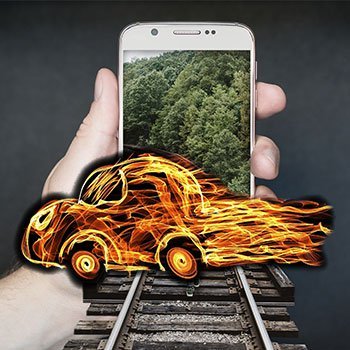
The fun part?
When you drive or walk the same route every day, you learn the locations of various objects and buildings and build mental models of these routes. The cognitive processes take place automatically. You are usually not cognizant of this latent learning.
Now when you need to find a building or object on that particular route, your cognitive mapping of that route comes into play. Your cognitive processes use existing knowledge of the environment to generate new knowledge or pathways to find the building or object.
You usually do not have a problem locating a familiar place, even if you have access to a wide range of mental models.
Cognitive Maps & Mazes
Edward Tolman’s experiments involving rats and mazes was how he was able to visualize the importance of cognitive mapping in the human brain.
Tolman placed a rat in a cross-shaped maze and allowed it to explore the maze.
After the rat had explored the maze for a bit, it was placed at one arm of the cross, and food was kept at the next arm to the immediate right.
Since the rat was familiar with the layout, it learned to turn right at the intersection to get to the food.
Next, the rat was placed at a different arm of the cross maze. Tolman was interested to see if there was a change in behavior.
Did it get lost?
No, the rat was still able to move in the direction of the food no matter where in the maze it was placed. Differences in the position of the rat did not matter. Tolman stated that this was because of the initial cognitive map it had created of the maze.
Tolman’s experiments with rats ingrained the idea of the cognitive map in cognitive psychology.
How do Cognitive Maps Work?
What is the process to design cognitive maps in your brain?
Your brain creates a cognitive map using a number of sources. It uses visual stimulus and other cues like olfaction and hearing to deduce your location within an environment as you move through it.

Using these cues, a vector is created that represents your position and direction within an environment. The vector is then passed to the hippocampal place cells where it is interpreted, and the brain gets more information about the environment and your relative locations within the context of the cognitive map.
The entire activity may seem complex, but it happens almost automatically.
The Hippocampus As A Cognitive Map
Interestingly, both birds and mammals form cognitive maps using the brain’s hippocampus.
In The Hippocampus as a Cognitive Map (1978), neuroscientist John O’Keefe and neuropsychologist Lynn Nadel, say that neurons in the hippocampus form a memory of the animal’s environment. Then when the animal goes to that particular place, these neurons are reminded of that place, as if they were reading from a map.
The book provided a more allocentric interpretation of the cognitive map.
Other studies by Torkel Hafting and Marianne Fyhn – part of a team headed by Edvard and May-Britt Moser at the Norwegian University of Science and Technology – discovered the existence of grid cells in the brain. They used techniques mastered by O’Keefe to study inputs to the hippocampus.
The researchers found a new type of spatial cells in the entorhinal cortex. The entorhinal cortex is the part of the brain that sends more information to the hippocampus than almost anywhere else. Surprisingly, the researchers found that these cells fired only when the rat went into specific places in the environment and that they fired in many places.

More interesting still, these cells formed a hexagonal pattern in which each firing place was the same distance from all its neighbouring ones.
The study led researchers to the discovery that metric information is inherent in the brain, wired into the grid cells, regardless of its prior experience.
The discovery proved to be both surprising and dramatic discovery. Scientists drew an important inference. They now understood that the hippocampus is both a map and a memory system.
Does Cognitive Mapping Use Memory?
Cognitive mapping uses spatial memory, but it is more than that.
Spatial memory records information about one’s environment and spatial orientation.
Now, here’s the most important point to understand:
The fact that you can retain the sequence of streets in the directions to your house is spatial memory.
However, when you see these streets in your “mind’s eye” as you give directions – that is cognitive mapping.
Are Cognitive Maps Accurate?
Cognitive maps are not completely accurate.
When you create a cognitive map, your brain will omit information that is irrelevant to the task at hand.
For example, you and your colleague, who lives in the same apartment block, take the same route to drive home daily. However, while you are in the driving seat, your colleague has a driver.
So, while you may be able to describe the route from the office to home accurately, your colleague may have a more basic idea of the road and objects en route.
Why?
Because he does not have to concentrate on the road during the drive, whereas you must.
Therefore, both of you sketch maps of the same route differently. The example also shows that travel modes can impact cognitive mapping.
The way people travel has a huge impact on your cognitive mapping – especially if they regularly use neurobics.
Understanding how the brain processes and sketches cognitive maps has important implications for transportation planners and accessibility planning in cities.

What this also means is that a cognitive map can be different from the actual environment that a person is mapping due to the relationships of an individual with the environmental stimuli.
Furthermore, the way spatial knowledge is represented in your mind leads to certain patterns of distortions. Spatial knowledge in the human brain is not as well modeled as the Euclidean geometry of high school math. For example, people often think the distance to go from A to B is different than from B to A.
Moreover, cognitive maps generally get distorted by simplifying assumptions, beliefs and preconceptions. For instance, in your cognitive maps, all roads may join at right angles or straight lines even if they do not do so in the real-world.
Are Cognitive Maps Different From a Mind Map?
When it comes to the real of ideas, mind maps do relate. You can think of them as the most simplistic and straightforward type of cognitive maps.
They are quick to create and have a clear hierarchy and structure. A mind map is akin to a tree with branches, where the bark represents a central topic, and the branches denote the subtopics.

A quick Mind Map for learning German vocabulary related to cooking (hence the fish).
In mind-mapping, the map represents information and ideas that are connected to each other. Such connections enable you to retain and learn new things quickly and easily.
Mind map “links” are usually “dynamically passive” – they don’t represent anything more than connectivity used for creativity and enhanced memory. To get really good, I suggest you check out Tony Buzan’s Mind Map Mastery.
In cognitive mapping, a model of the world is created using links as well as concepts. Moreover, cognitive mapping also uses links more actively than mind mapping. But the larger point involves strategy, which is what we’ll cover next.
How to Build Memory Palaces with Cognitive Maps?
Can cognitive maps enable you to find and build memory palaces?
Absolutely!
Here’s how:
As you form new cognitive maps of places you visit or recall your childhood home, college dormitory, a beloved first apartment, or your current residence, try to use them as multiple Memory Palaces.
Seen a new movie or read a new novel?
Use the layout of the fictional character’s home or environment to create your own mind palace.
Think the tiny home of Frodo Baggins from Lord of the Rings or Monica’s iconic New York apartment on Friends.
In sum:
Just use your natural ability to form mental maps to build strong memory palaces and you can remember anything that you want.
Ready to get started? If not, let me know your questions and let’s get you more clarity so you can!
The post What Are Cognitive Maps & Do They Work With Memory Palaces? appeared first on Magnetic Memory Method - How to Memorize With A Memory Palace.
December 11, 2019
Nir Eyal On Creating An Indistractable Life And Techno Panic-Free Focus
 Writer and philosopher Paul Virilio famously said “The invention of the ship was also the invention of the shipwreck.”
Writer and philosopher Paul Virilio famously said “The invention of the ship was also the invention of the shipwreck.”
In this day and age, how true, how fitting…
With every success comes unforeseen consequences.
Just look at Facebook.
Once touted as a revolutionary social networking giant, and undoubtedly the forerunner of modern digital communication, it is now more famous for its “scandals” in the 2016 US Presidential election and data breeches (i.e. selling your private data).
Do you think Mark Zuckerberg could ever have imagined this level of influence and power could be his when he dreamed up the platform in his dorm room? Or the consequences and downfall that comes with it?
And that’s just the “big stuff.” What about the role of tech and social media in our everyday lives?
Don’t we enjoy a rush of adrenaline or a bit of a dopamine spike when our device lights up and sounds that familiar ping, or we see our phone buzz on our desk?
We are, without a doubt, under a spell.
And it’s not just Facebook. I’m looking at you Instagram, YouTube, Pinterest, Snapchat, and Tiktok (and whatever the hot new app is coming down the pipeline next).
The notifications call.
We answer.
And just like the Titanic, we unwittingly are steering our ship towards an iceberg, all due to distraction.
But what if our lives weren’t ruled by the hefty priced device in our pocket?
Today I sit down with bestselling writer, Nir Eyal, author of Hooked: How to Build Habit-Forming Products and Indistractable: How to Control Your Attention and Choose Your Life.
Nir is a former Stanford Graduate School professor and accomplished and successful angel investor, consultant, and teacher. We discuss Indistractable and how you can break the cycle of “ding, glance (or in reality 30 minutes later), return to task/conversation/work/sleep, repeat.”
You don’t have to live as a slave to technology. You are not a slave of your own making. You are the captain of your ship.
Curious and want to know more? All you have to do is press play (above) now and you’ll discover:
Why “indistractable” is a noun, and not an adjective
How a moniker can set you up for success
The reason we can look to religion as an example of healthy habits…even if we’re “nonbelievers”
The benefit of teaching to form one’s own identity
The tactful way you can encourage those around you to be indistractable
How we define social antibodies, and how they can help culture, as a whole
Why we should lead by example where technology dependence is concerned… but, at the same time, need to push back on the techno panics (I agree to large extent with Nir on this point, but still feel Digital Amnesia is a pressing issue and we’re too early in the game to say much either way)
Where blame really lies for technology addiction (and it’s not what you think)
Why detoxes, “30 day plans,” and other extremist responses aren’t the solution to calm a distracted mind and life
The reason distraction doesn’t always look like what we think (it’s not all Instagram and Candy Crush folks!)
The real cause of our distraction and the greatest source of distraction (hint: it’s not an outside source and Evernote is probably okay to use)
Why a five year plan approach isn’t the most effective measure of your values…and what is
The three key areas to consider when dividing and prioritizing your time
Do I Recommend Indistractable?
As a matter of fact, I do.

Even though I’m goofing around in this photo, the fact is that without the techniques Nir shares, I’d be a nutcase. I’d never be able to keep up the pace of a nearly-weekly podcast with YouTube videos, blog posts and new memory training products, and read books like his quickly if I couldn’t make myself indistractable.
I learned new concepts from this book and, very importantly, reinforced old ones.
Even if you think you’ve heard it all before, I promise you this book will give you some surprises, compelling new research findings and unexpected help. To wit, you even get a precious analog device that could be worth millions to you one day. (No exaggeration.)
And if you are that rare cat who really has heard it all before, then you already know the wisdom of reinforcement. You have already used the speed of implementation rule to order your copy. Congrats!
In case you don’t know that rule, watch this:
Further Resources on the Web, this podcast, and the MMM Blog:
Nir And Far (Nir’s official website)
Special link for ordering Indistractable
Nir’s article on habits vs. routines
Nir Eyal’s Morning Routine on Business Insider
Indistractable’s feature on Forbes.com
Timothy Moser Talks About Memory Skills and Productivity (MMM Podcast)
3 Shocking Ways Smartphone Addiction Erodes Your Brain and Memory
The post Nir Eyal On Creating An Indistractable Life And Techno Panic-Free Focus appeared first on Magnetic Memory Method - How to Memorize With A Memory Palace.

















